Day #2 In Havana Continues With The Hemingway Home
Into the bus we step and back in history we go.
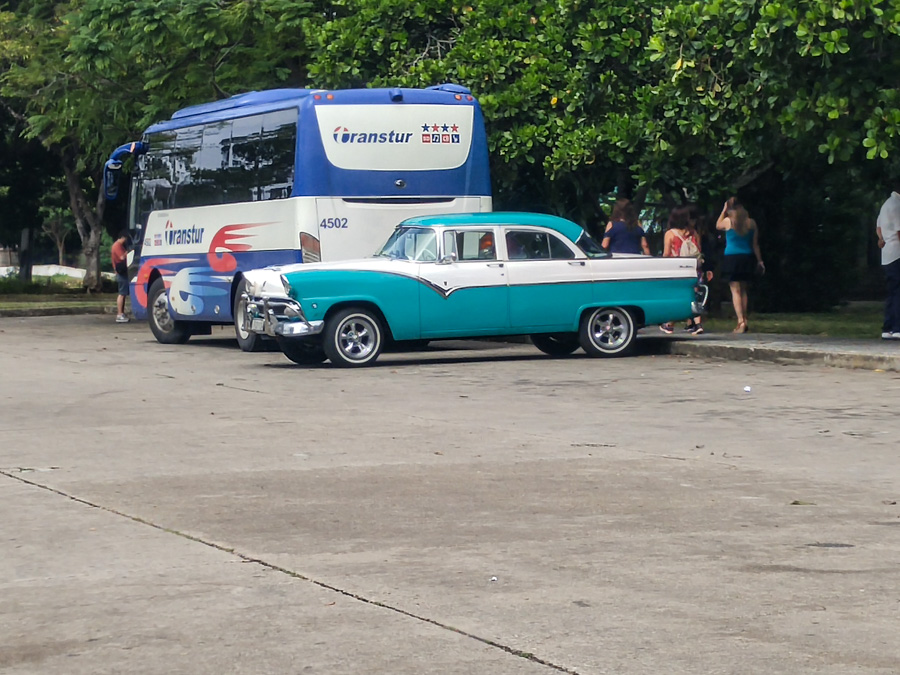
The 1955 Ford remains a classic - These days, there are around 60,000 classic American cars in Cuba
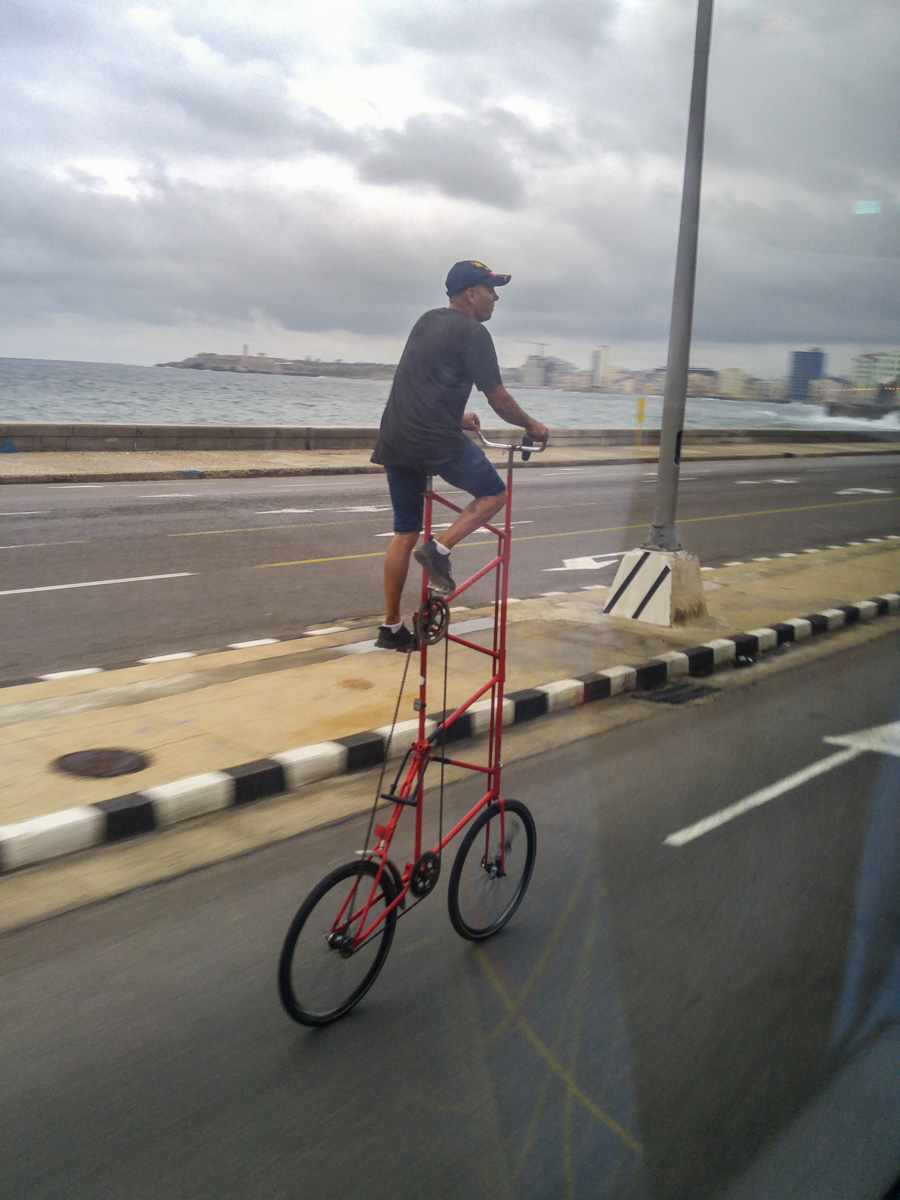
There are other forms of transportation...we did NOT opt for the "bi? cycle"
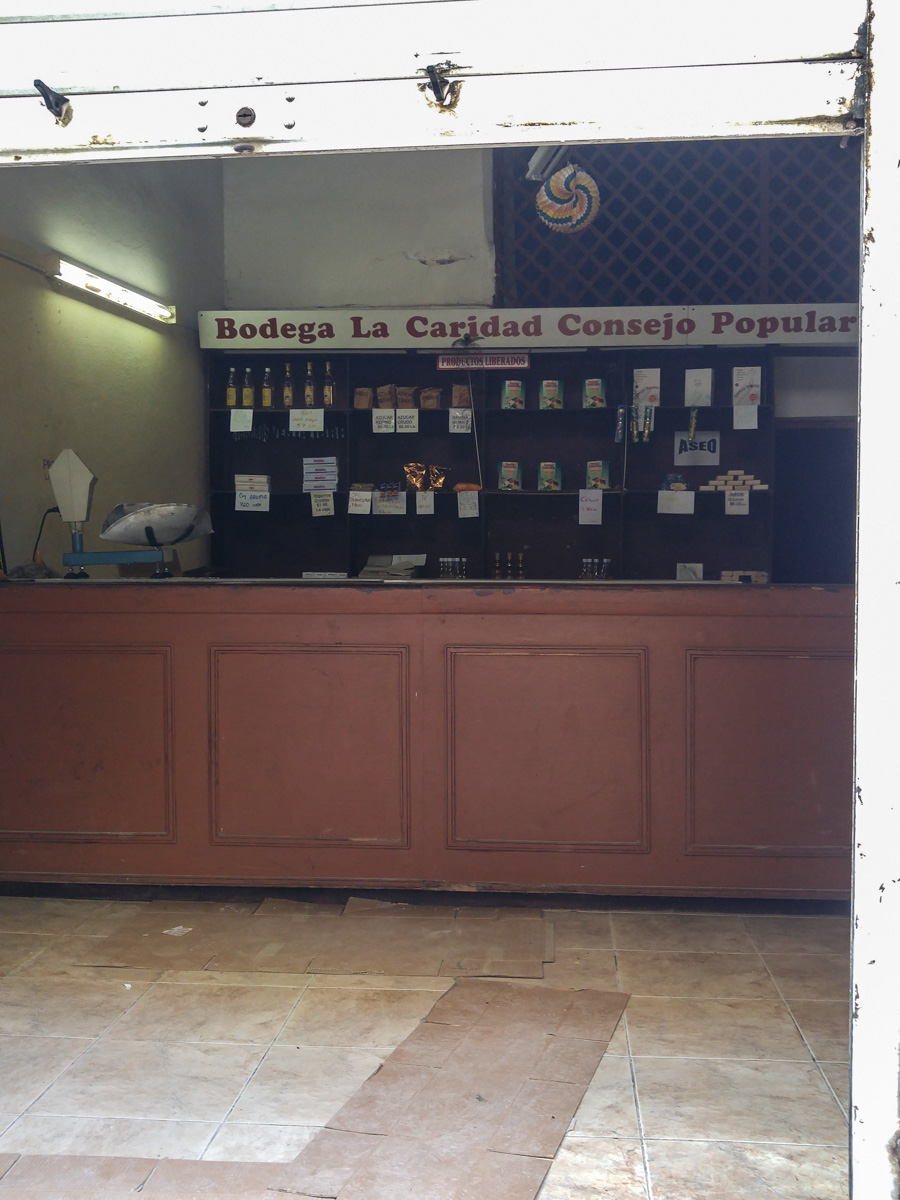
Bodega la Caridad Consejo Popular, the Cuban grocery store
The Reality Of Cuba - Our next stop was the Bodega la Caridad Consejo Popular. This is one of the stores most Cubans visit every month to pick up limited quantities of certain foods at reduced rates. Since the average income for Cubans in 2012 was about USD 22 per month, these rations – which were introduced in 1962 – remain a necessary part of life.
The rations are not extensive and they are certainly not luxurious: they often represent the difference between eating and not eating. They include, for example, six pounds each of rice and sugar per person per month, 15 lb. of flour, a dozen eggs (in certain months), 20 oz. of beans, etc. Children under 7 are also allocated a litre of milk.
Other rationed products, including meat and cooking fuels, are available elsewhere. Although Cubans are able (when they have the money) to buy products in the public market, and Cuba apparently has a thriving black market, a visit to this bodega is the reality of daily life faced by most Cuban families.
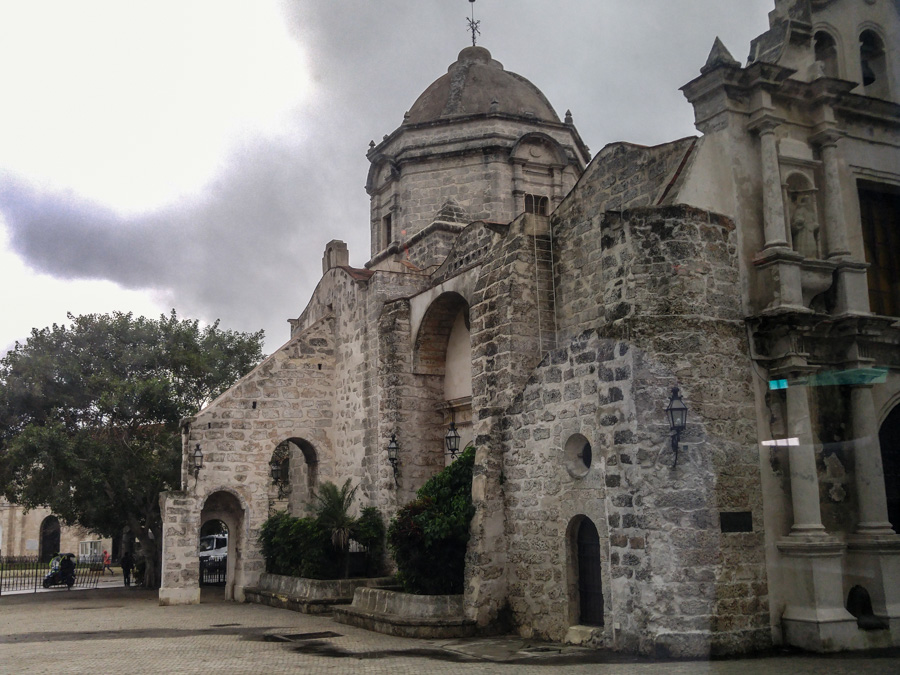
Most everywhere has its run down buildings
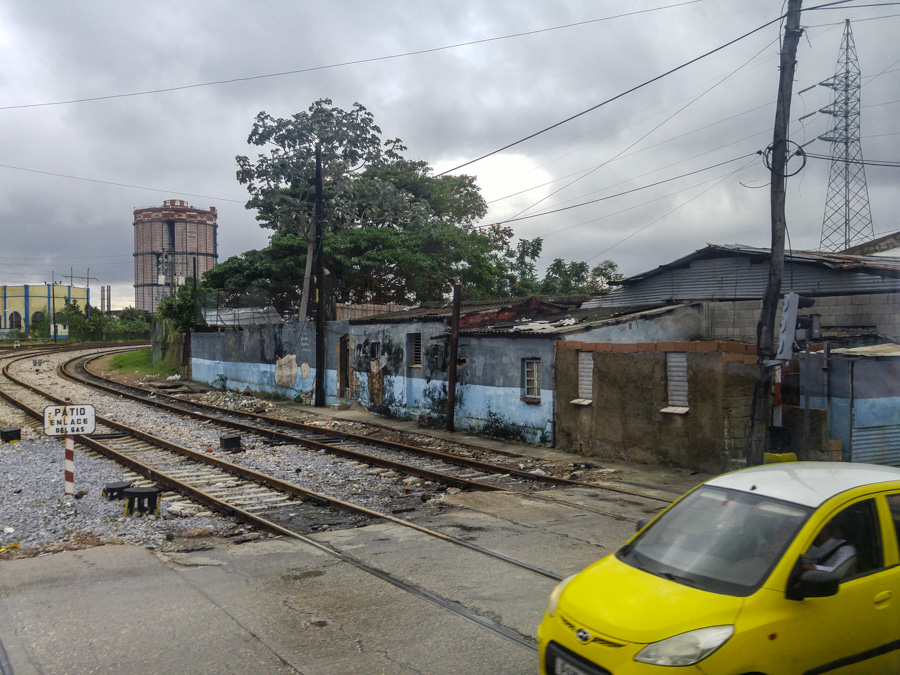
Warning gates do not exist
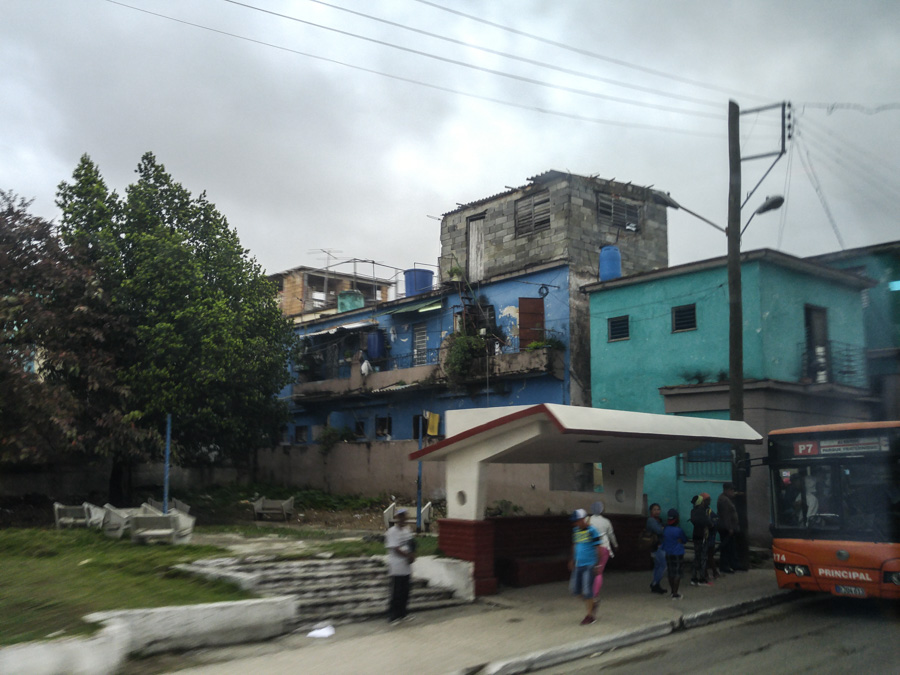
The bus provides a lot of transportation around the city
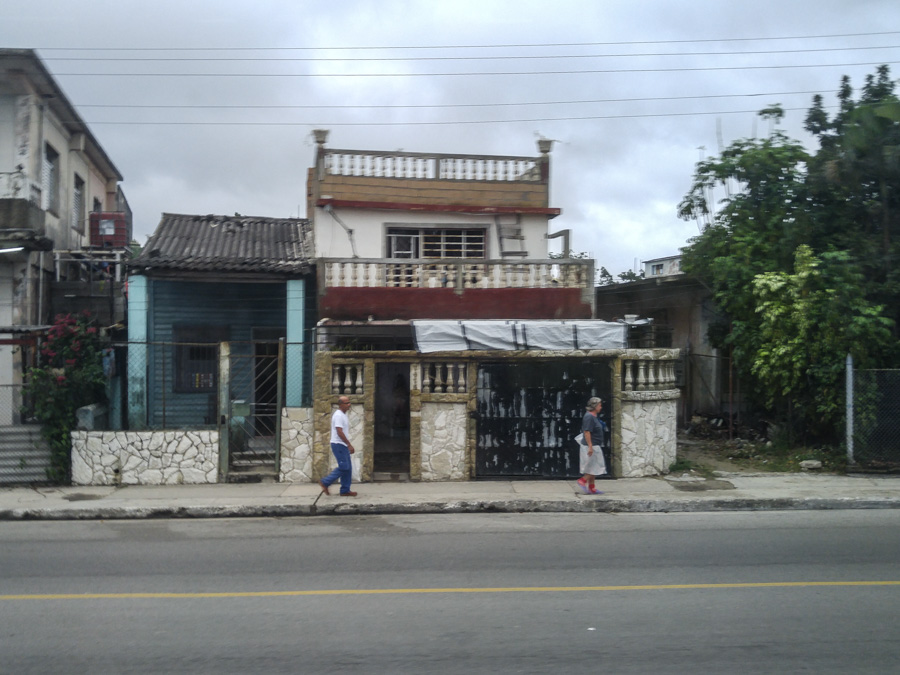
Typical street scenes
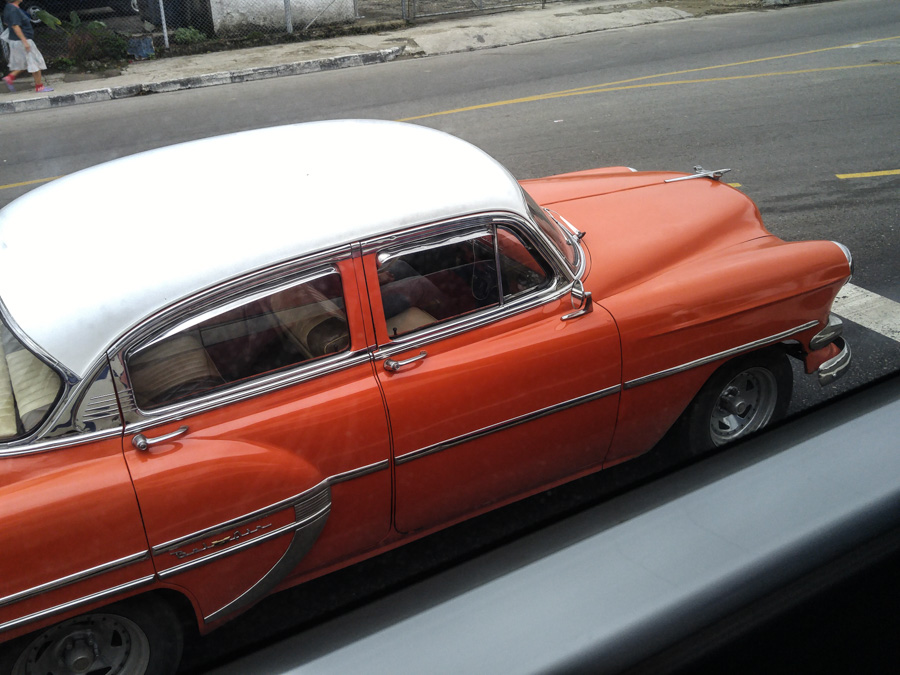
1952 Chevrolet BelAire
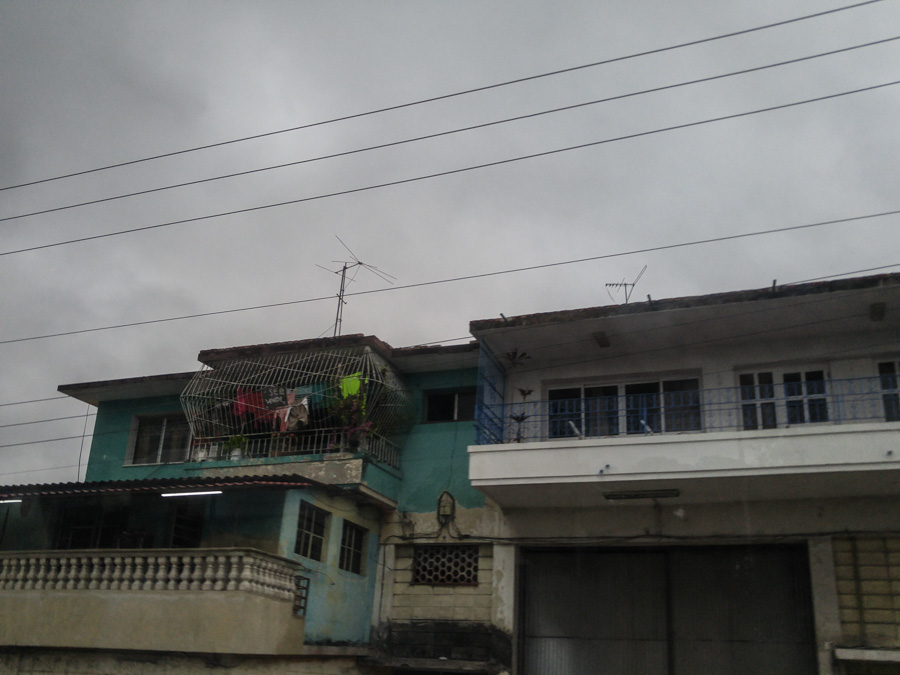
Cable is non-existent
Did You Know? - The first television broadcast in Cuba was in 1950, by the small radio station Union Radio, soon followed by other stations. The broadcasts featured sport, soap operas, news, cooking shows, and comedy. Censorship was imposed following the 1952 coup by Fulgencio Batista. Color broadcasting began in 1958.
Today, Cuba has five national television channels, one digital-only channel and a number of provincial channels, all under the control of the Cuban Institute of Radio and Television (ICRT).
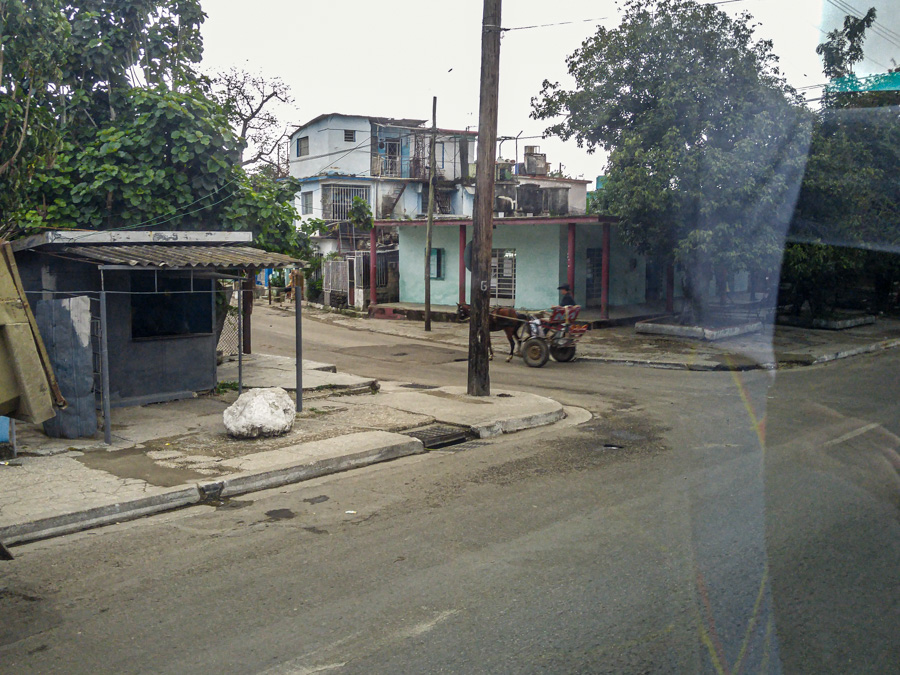
We stayed inside the bus and viewed the city through glass windows
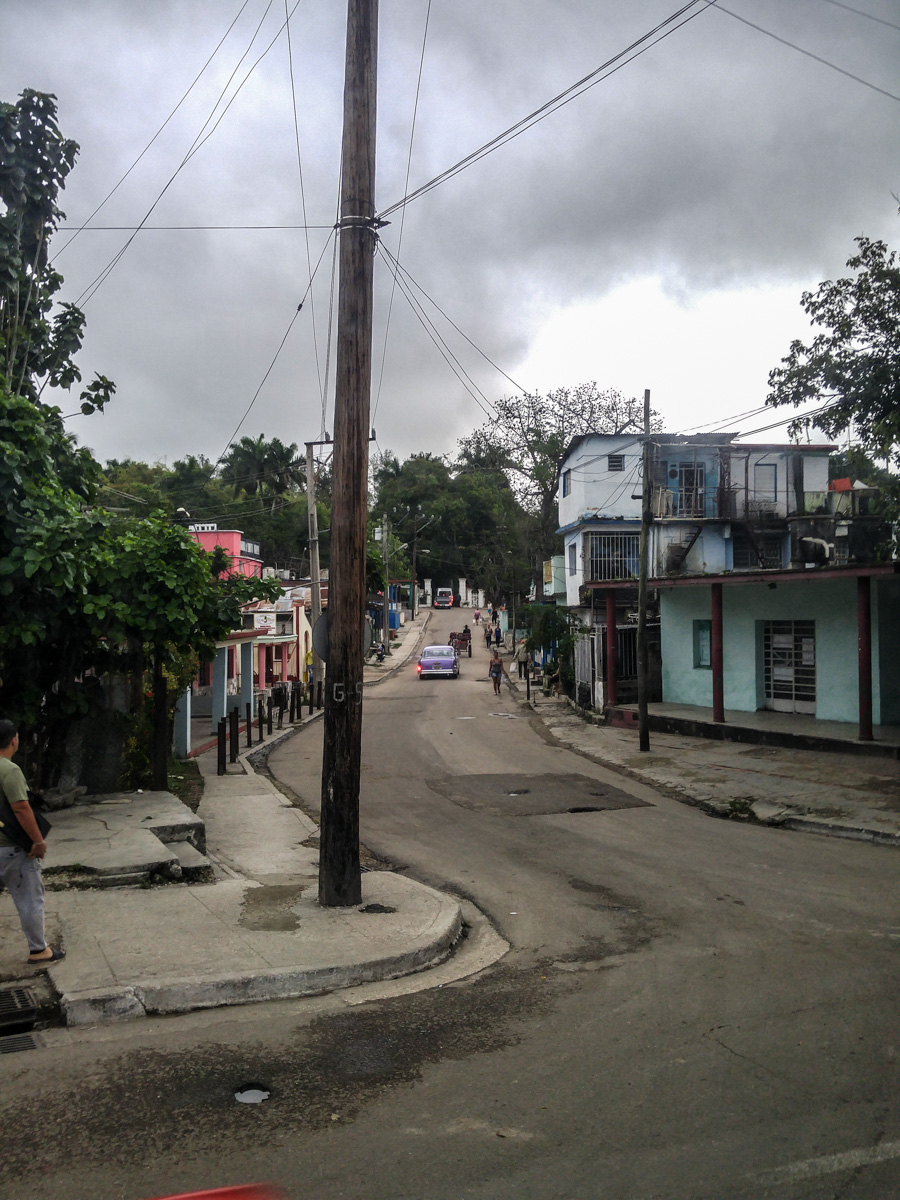
No street lighting is available in most of the city
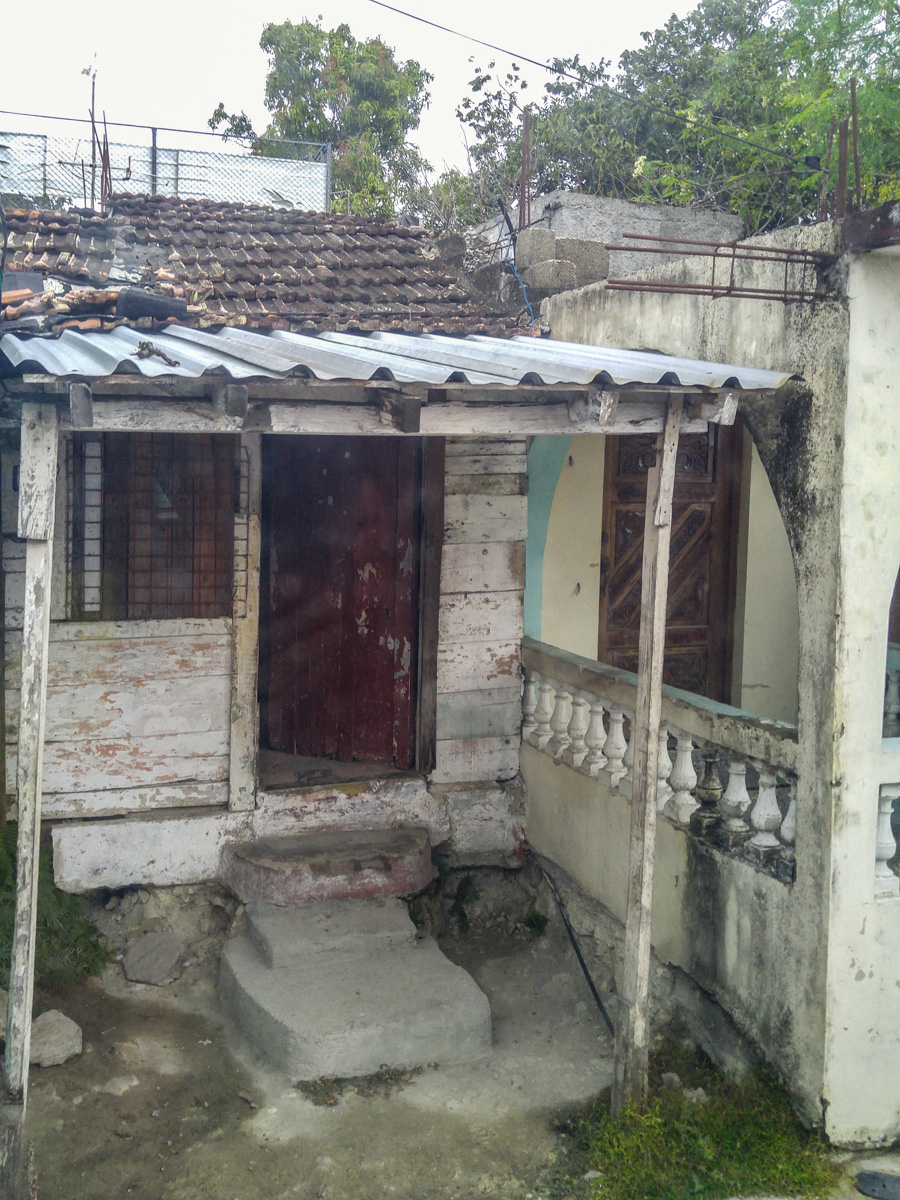
Tin roofs are economical albeit hot and provides no insulation

Did You Know? - Finca Vigía or Lookout Farm is the home of Ernest Hemingway in San Francisco de Paula Ward in Havana, Cuba. Finca Vigía is a museum. The house was built in 1886 by Catalan architect Miguel Pascual y Baguer on a hill about 15 miles (24 km) east of Havana. From the back veranda and the adjacent tower one has an excellent view of downtown Havana.
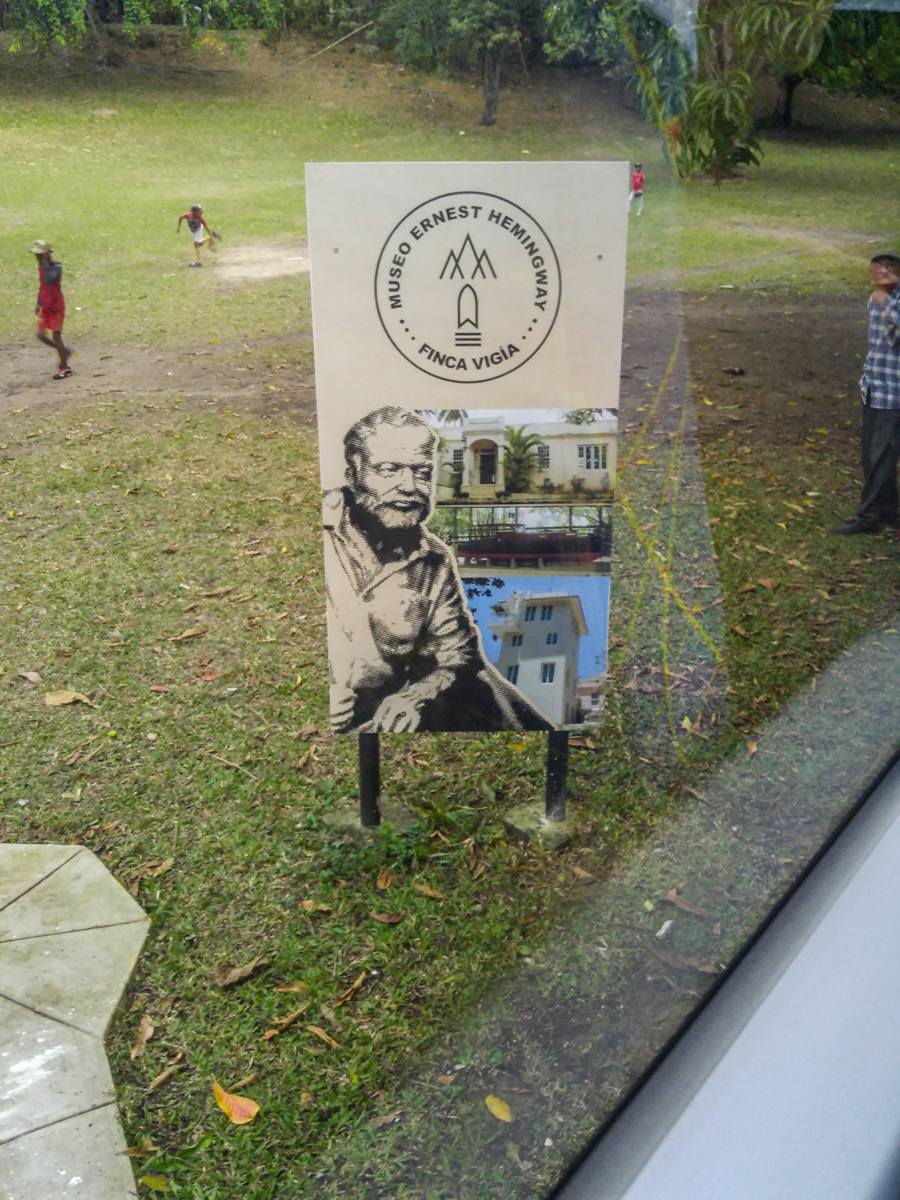
Entering the museum
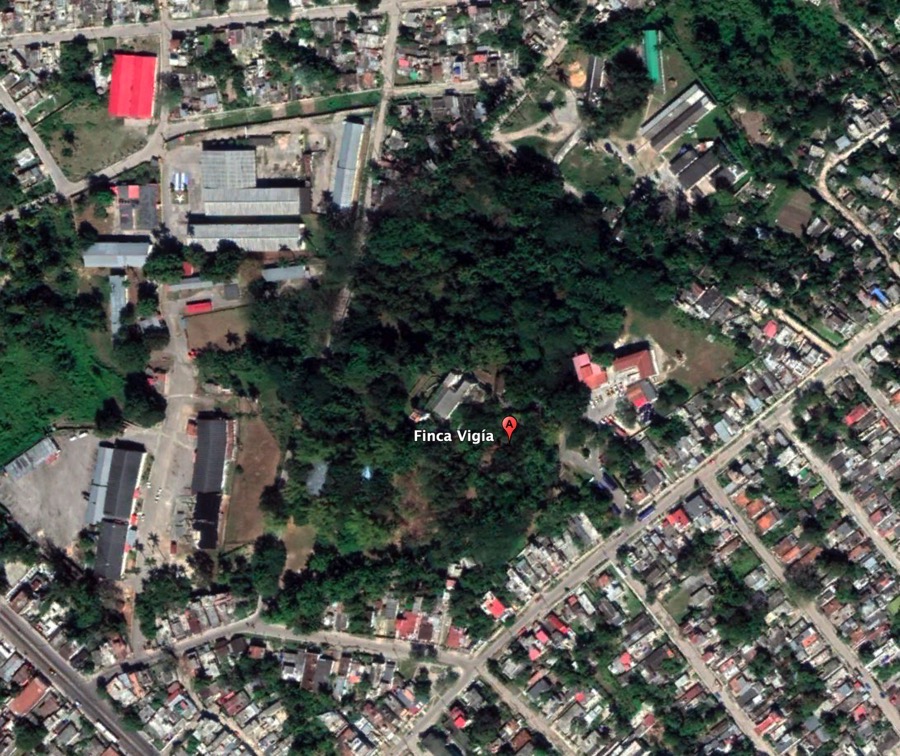
Surrounded by a small forest
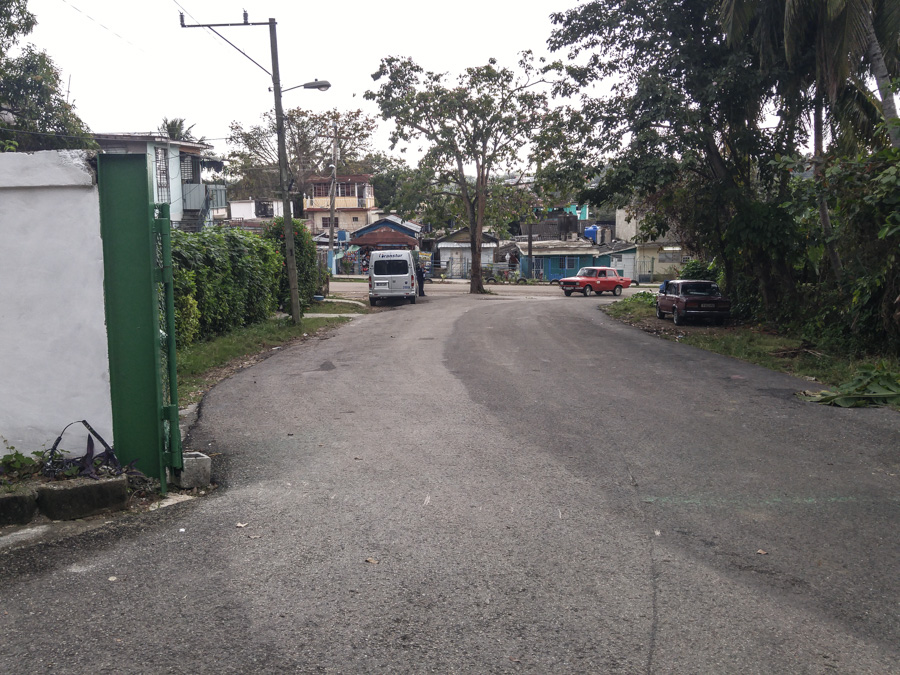
The Hemingway property was 15 acres in the beginning
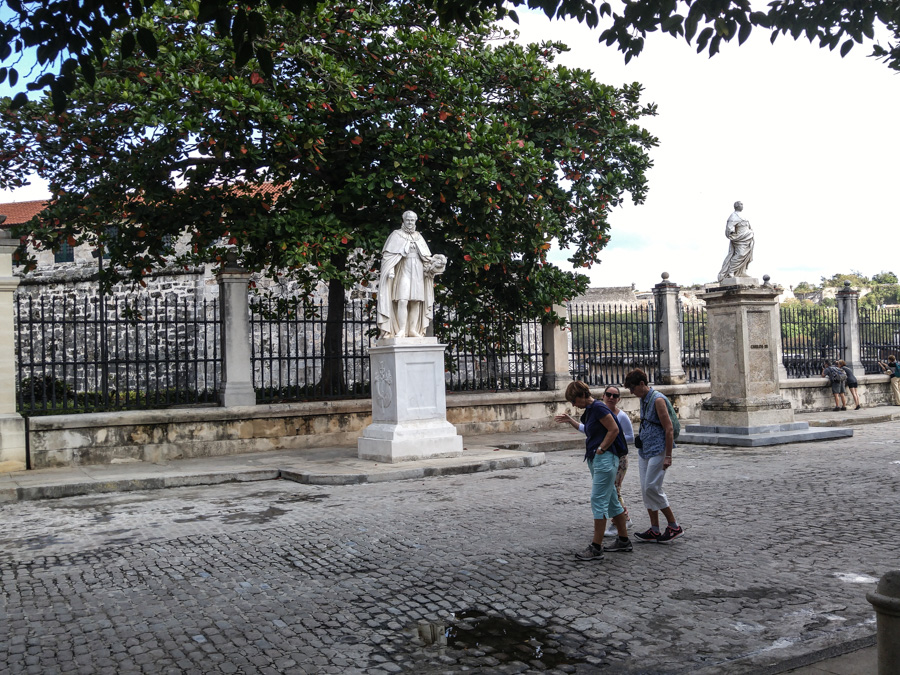
Just a short walk from the bus to the home
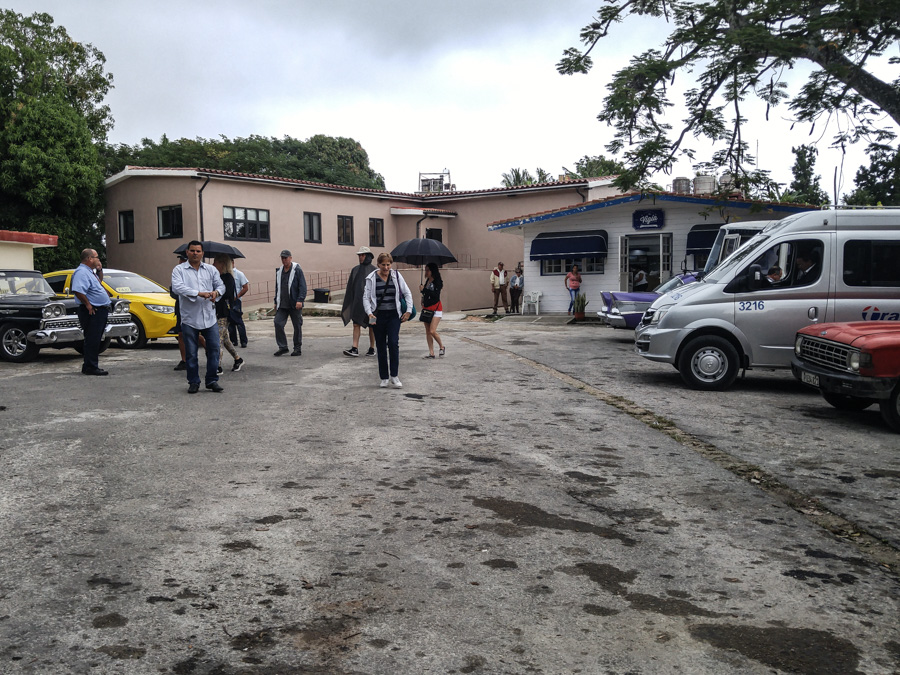
Time for a walk
Did You Know? - Hemingway lived in the house from mid 1939 to 1960, renting it at first, and then buying it in December 1940 after he married his third wife Martha Gellhorn. Hemingway paid $12,500 for the property. The property was located for Hemingway by Gellhorn, who had come to Cuba to be with Hemingway but decided she did not want to live in the small room he rented at the Hotel Ambos Mundos. The Finca at the time consisted of 15 acres (61,000 m2) with a farmhouse.
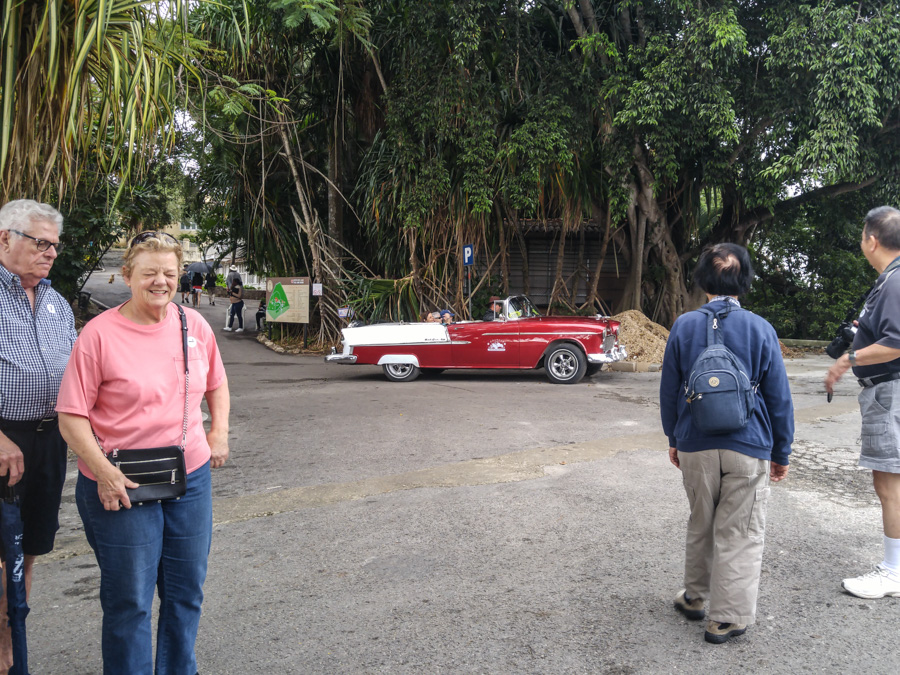
1955 Chevy convertible
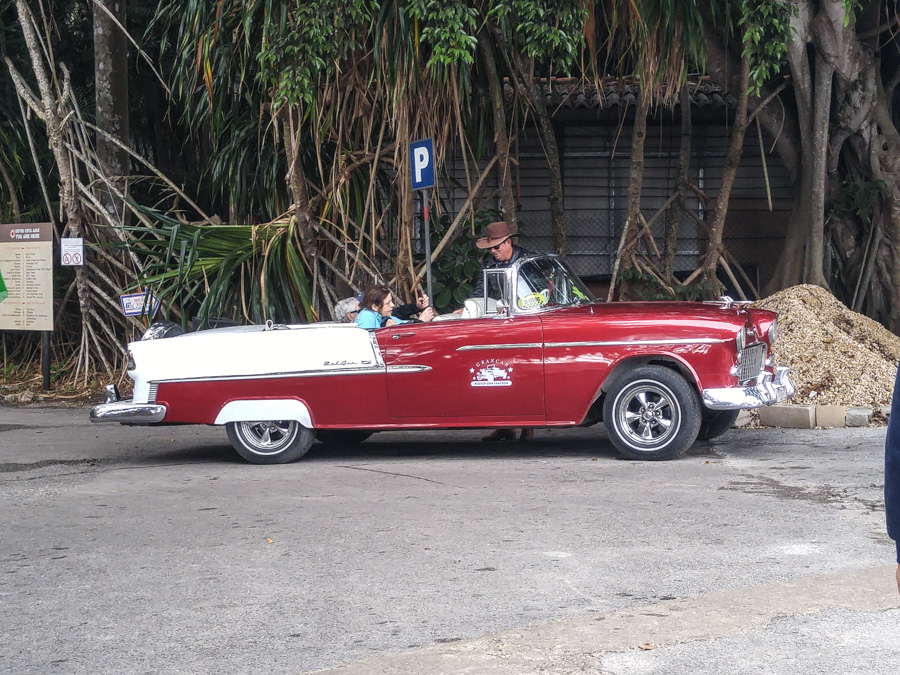
For a price you can get a ride and your picture taken
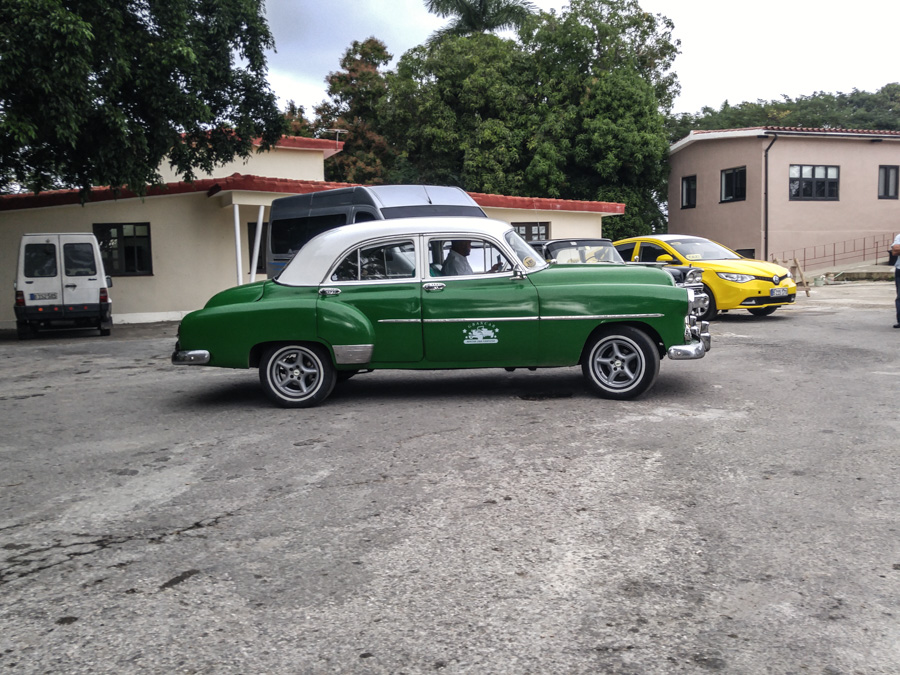
Almost like downtown Whittier?
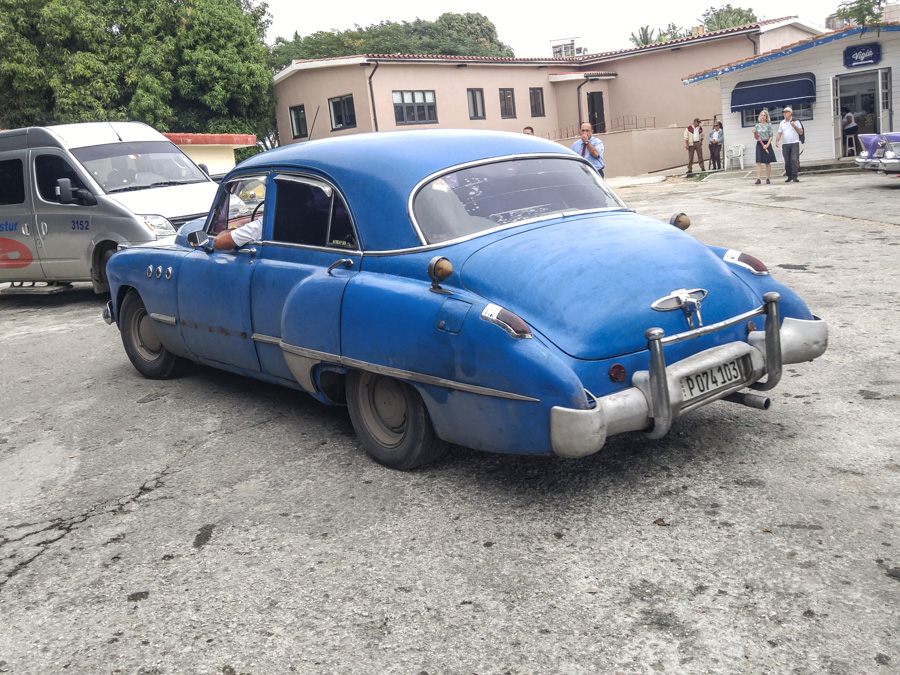
1952 Buick Special
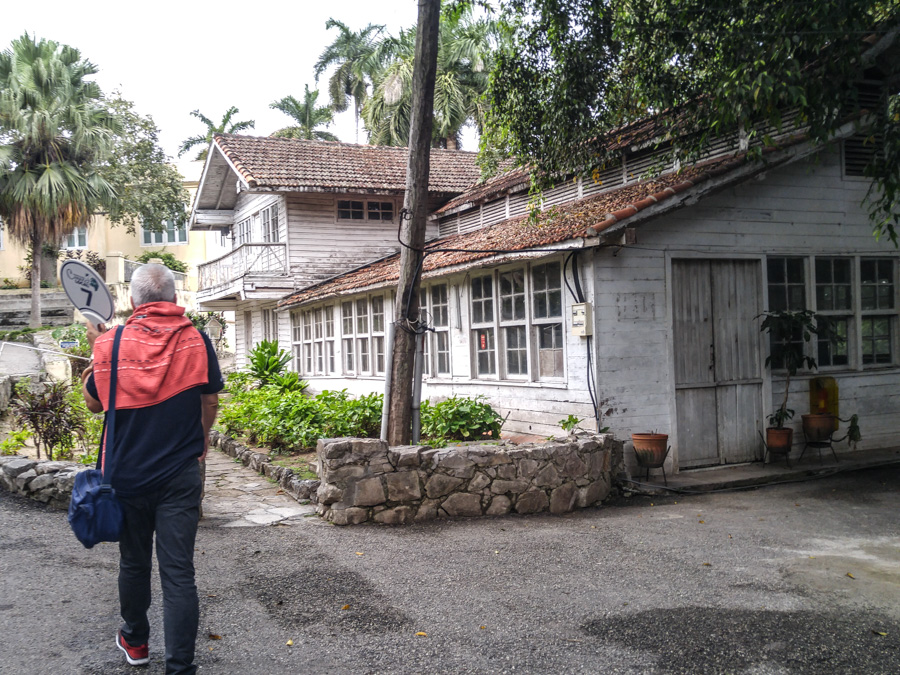
A haven in the winter
Did You Know? - It was at Finca Vigía that he wrote much of For Whom the Bell Tolls (a novel of the Spanish Civil War which Hemingway had covered as a journalist with Gellhorn in the late 1930s—the novel was started at the Ambos Mundos, and some was also written in Idaho). Hemingway would later buy the property out of some of the first royalties from the book, published in 1940.
When Hemingway and Gellhorn were divorced in 1945, Hemingway kept Finca Vigia and lived there during the winters with his last wife, Mary Welsh Hemingway.
At the Finca, Hemingway also wrote The Old Man and the Sea (1951) about a fisherman who lived in the nearby town of Cojimar and worked the waters off Havana.
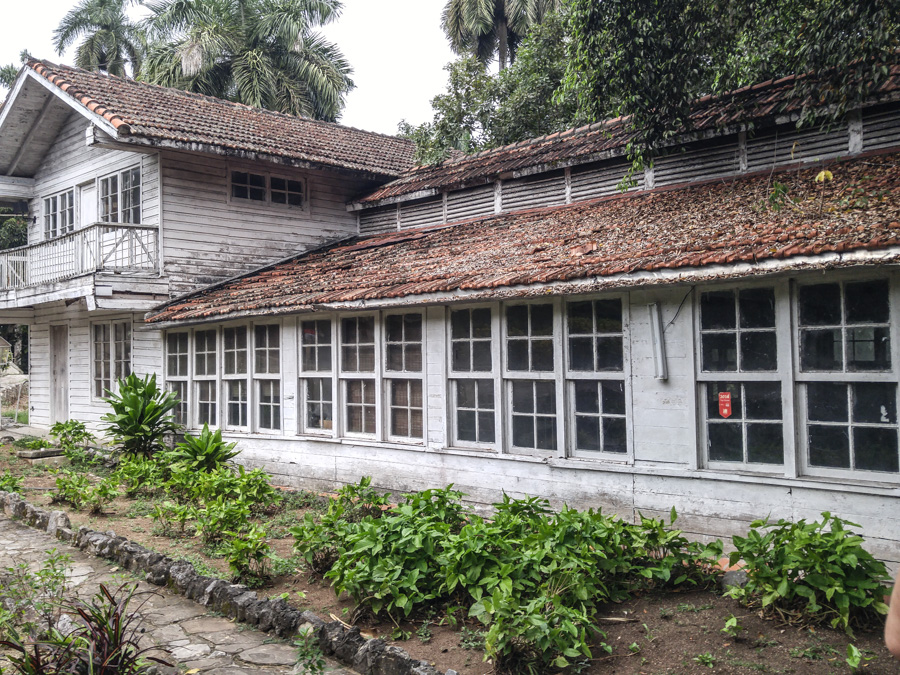
Garage and small house in the early days
Did You Know? - In the early 1940s, during the Second World War, Hemingway's three sons visited him often at the Finca, sometimes staying in a small house that Martha ("Marty") Hemingway had fixed up for them. The guest house, a converted one story wooden garage, is now used as the offices for the museum director and staff and for meetings.
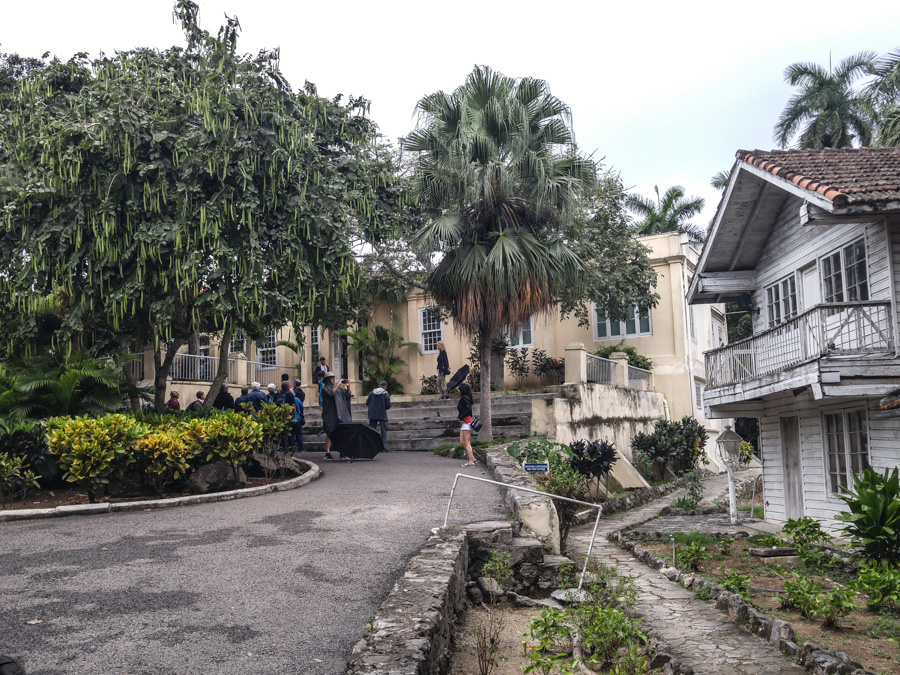
Up to the main house
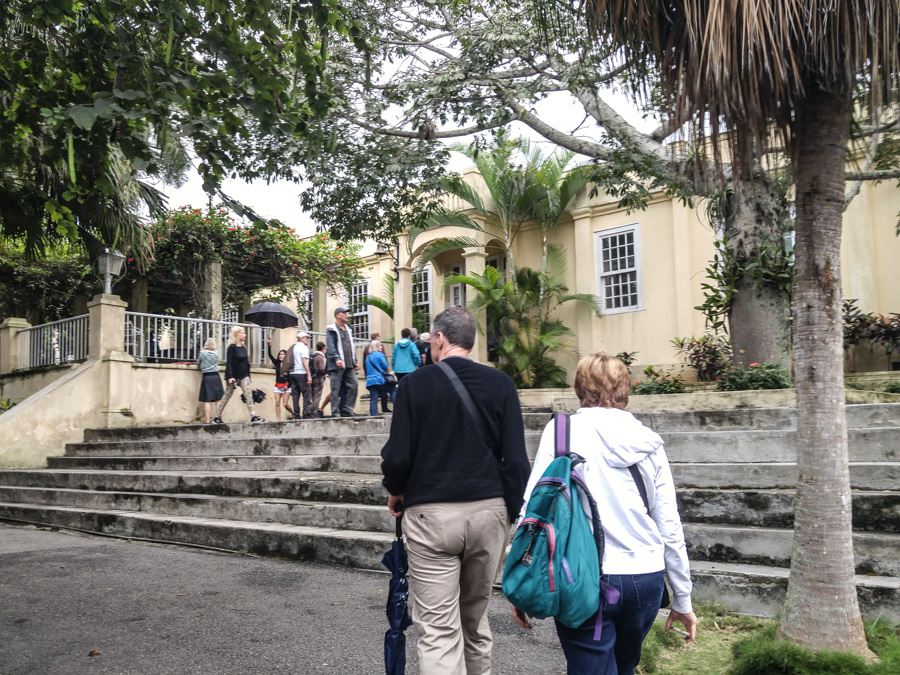
Going back into history
Did You Know? - When Mary Hemingway moved into the Finca in 1946, she had a writer's workshop tower constructed on the property, but Hemingway preferred to work in his bedroom, and the workshop was eventually assigned to the cats.
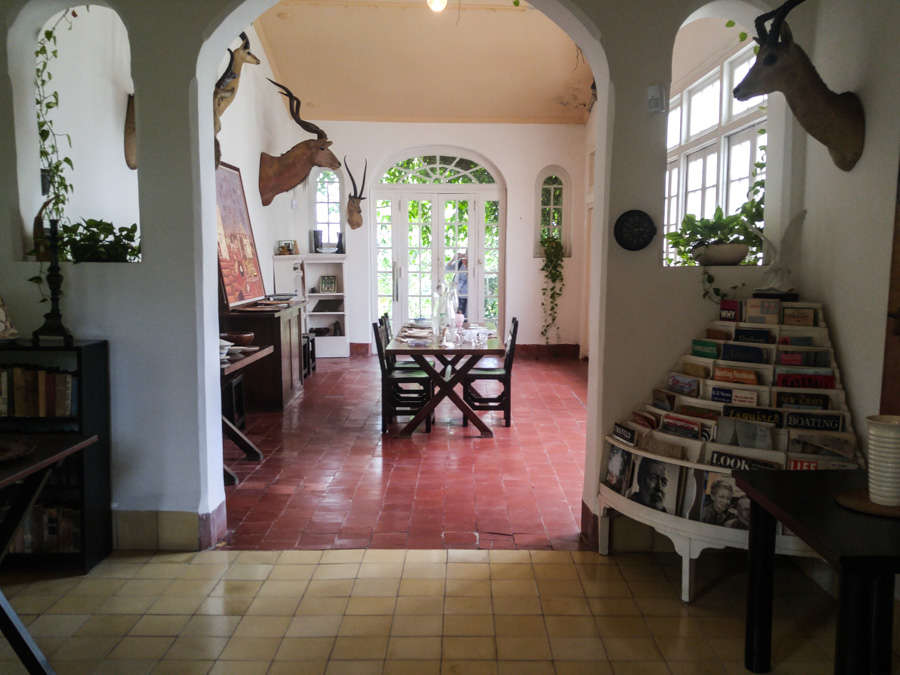
The property has been restored in 2017 after falling into disrepair
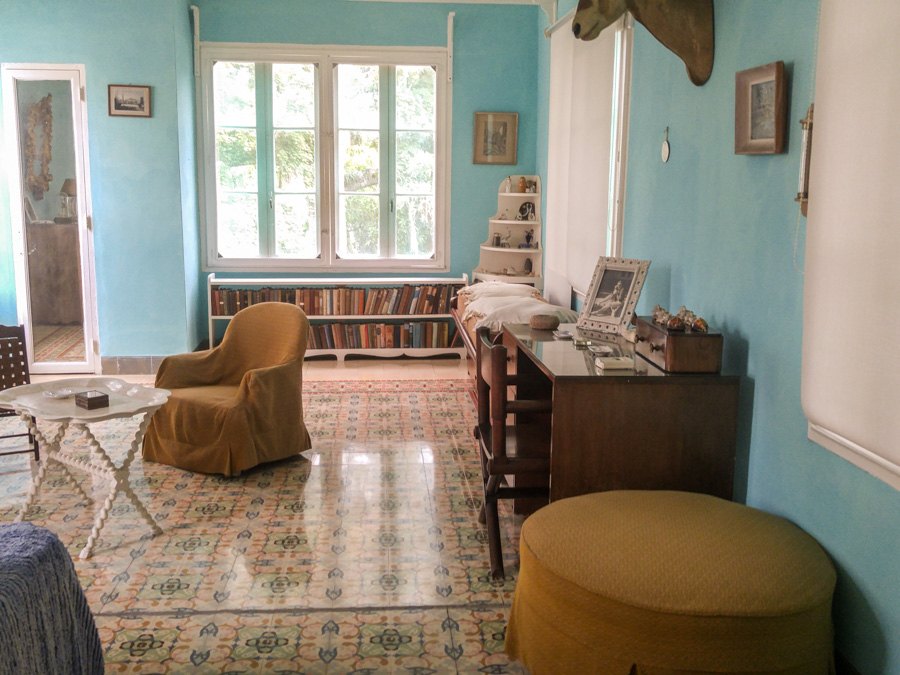
Most of his writing was done right here
Did You Know? - After the Cuban revolution ousted the US backed government in January 1959, Hemingway was on good terms with the new Cuban government, and even officially presented a trophy in Havana in the summer of 1960 to Fidel Castro, for winning a sport fishing contest named for Hemingway. Nevertheless, as depression and illness overtook him, Hemingway left Cuba for good on July 25, 1960, leaving behind the Cuban home that he had lived in for over 20 years
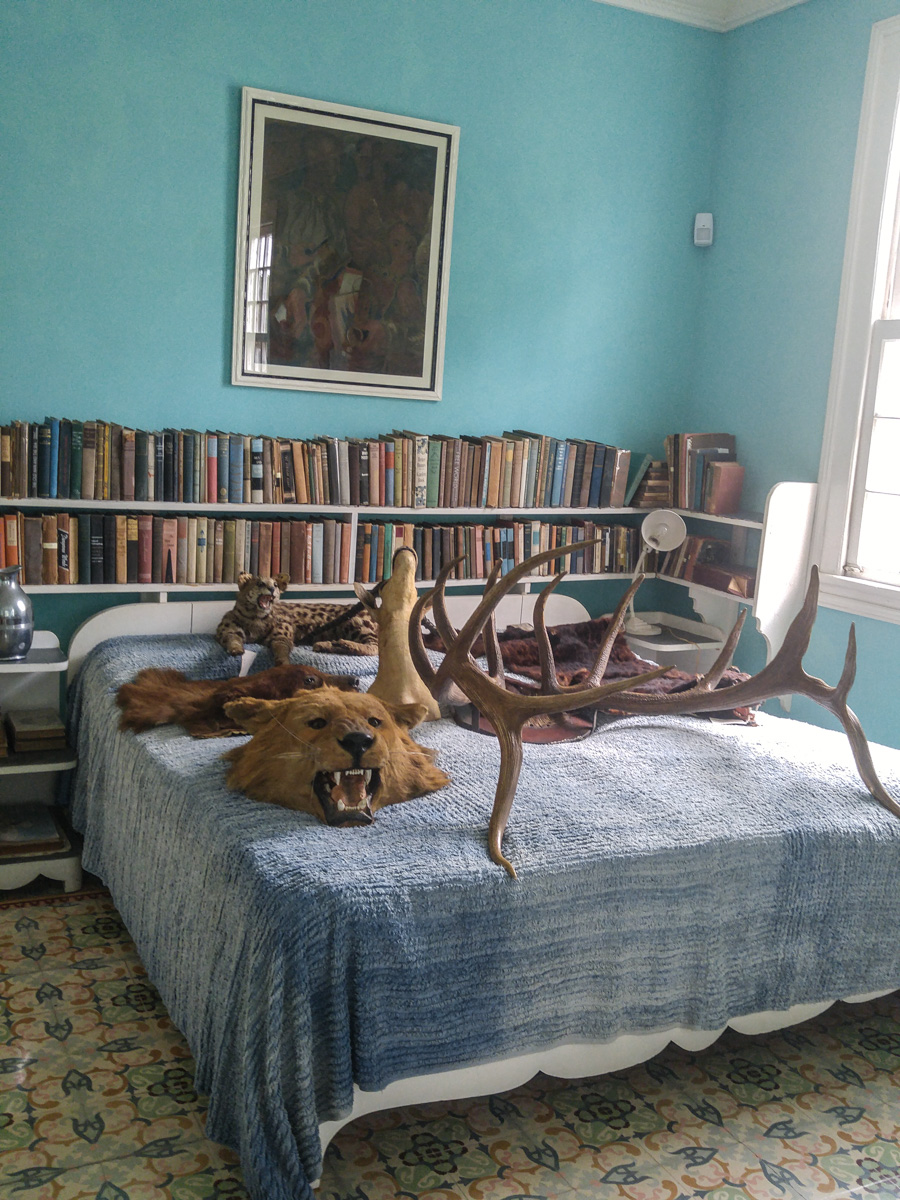
The bedroom was large and had great lighting for his writing activities
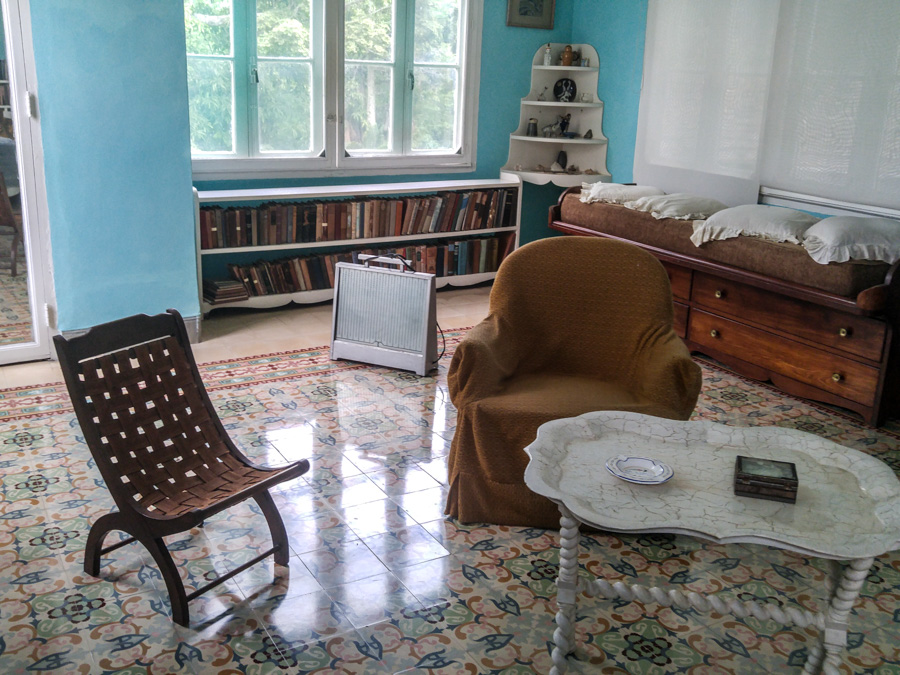
Checkout the floors
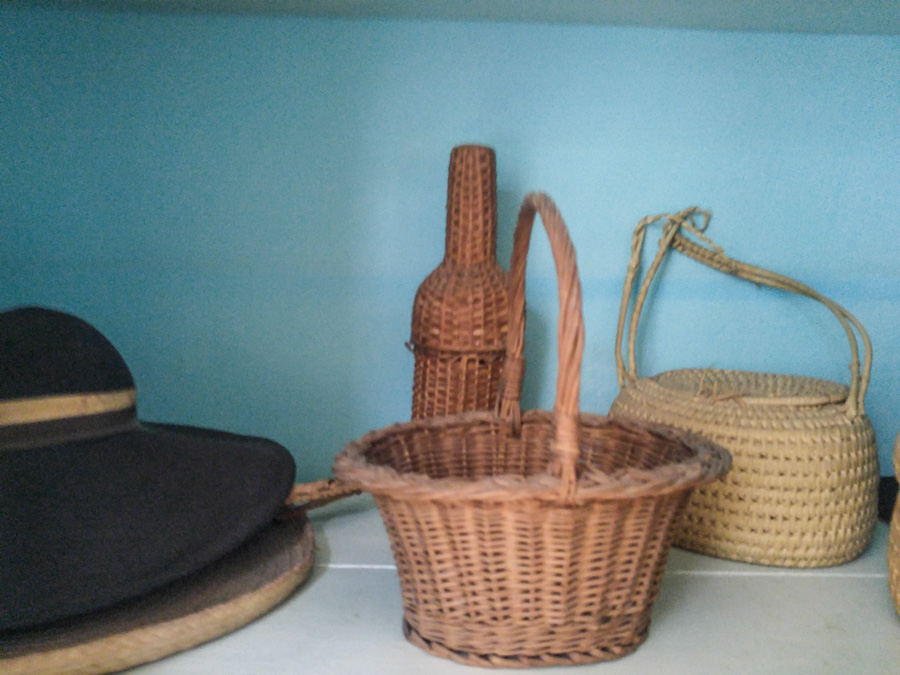
Many of the original objects still remain
Did You Know? - In the fall of 1960, the Cuban government expropriated a great deal of foreign property, including the Hemingway house Finca Vigía. As a result, the U.S. government broke off diplomatic relations with Cuba in October 1960 and imposed a partial financial embargo. After the Bay of Pigs invasion in April 1961 and Cuba's announcement that it was a Communist state in May, relations between Cuba and the U.S. deteriorated further.
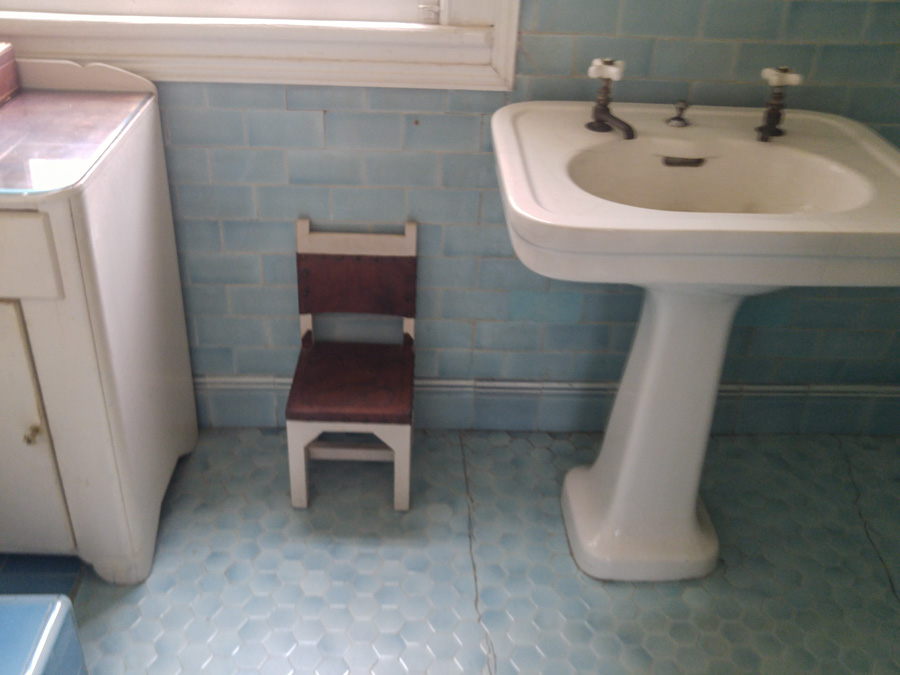
A step back in time to the 1940's
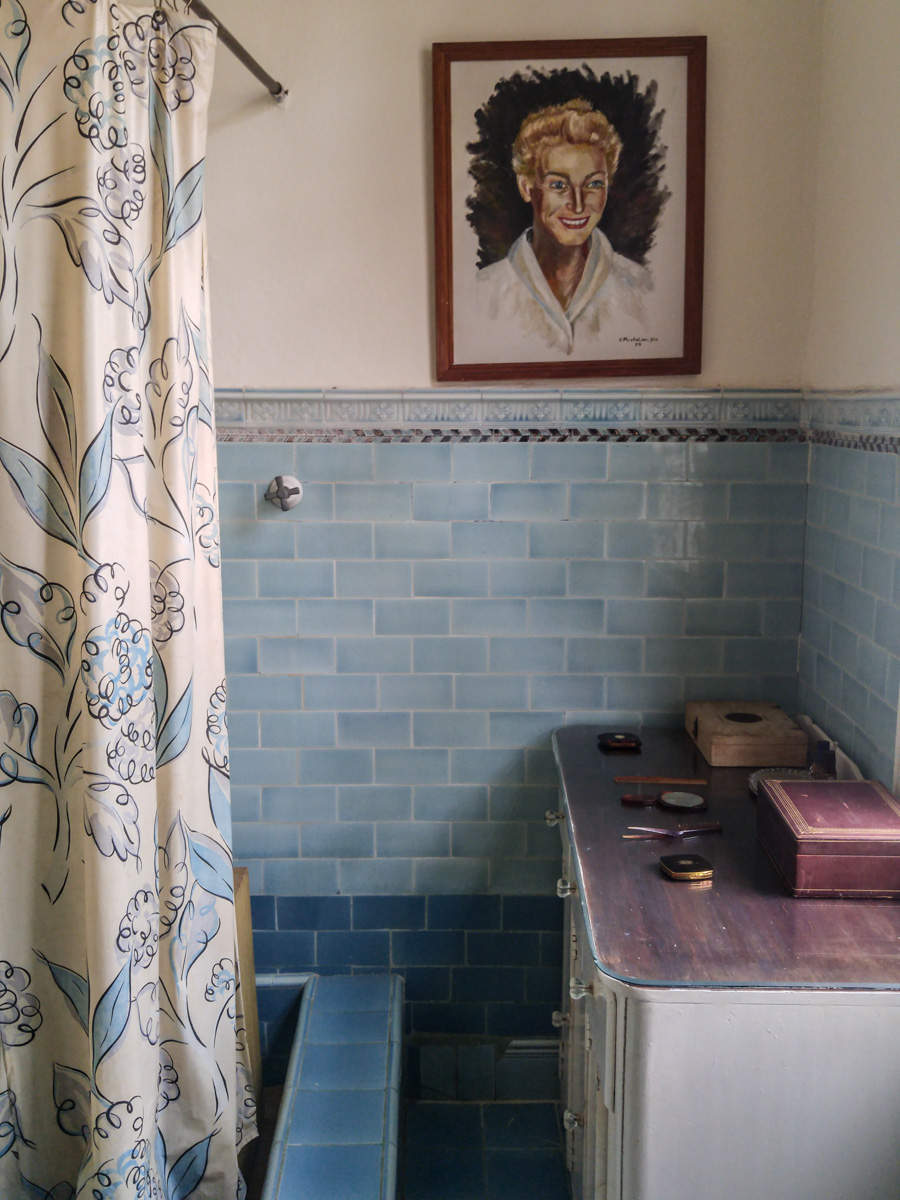
The home looks like the 1960's after the restoration
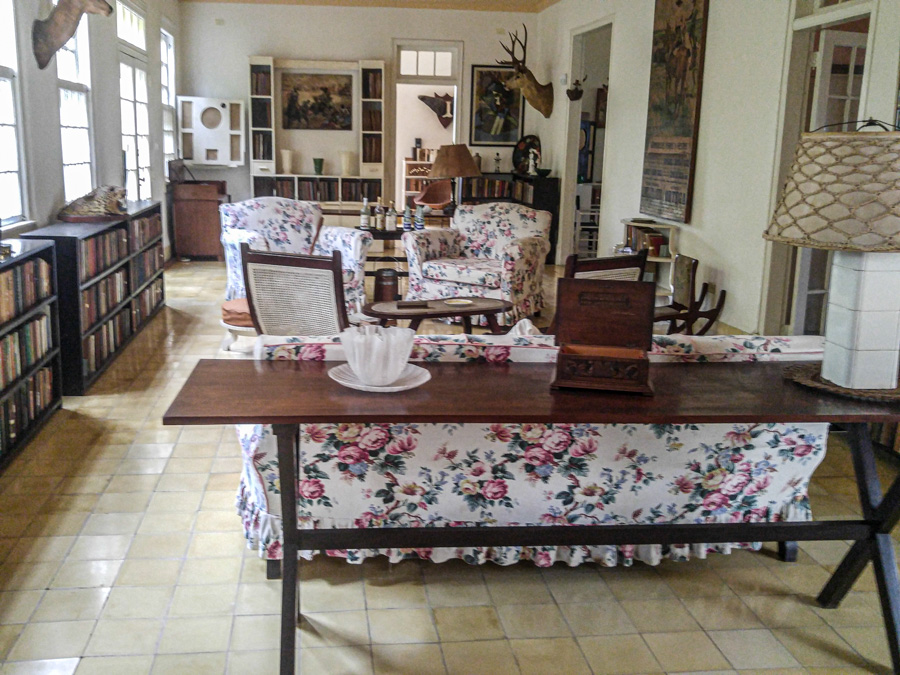
Living room has a view of the city
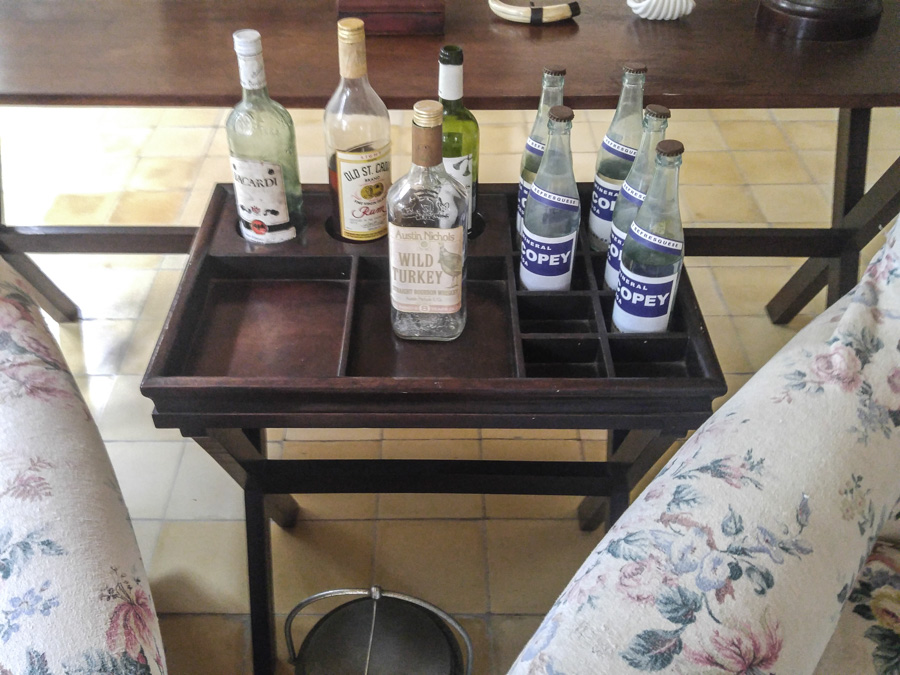
Ah ha... The writing fluids

He was also a hunter
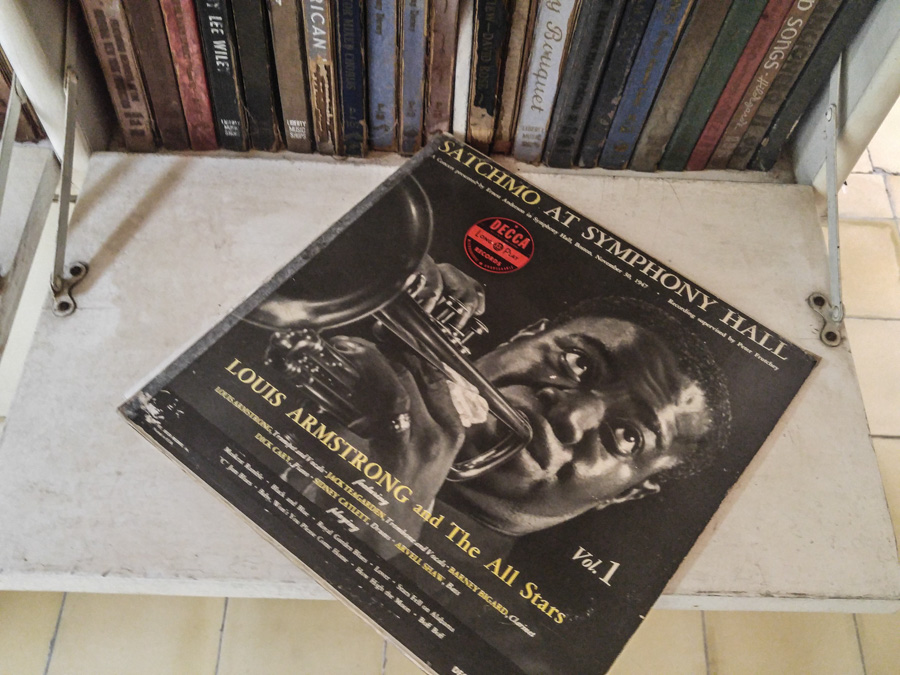
...and enjoyed music
Did You Know? - Hemingway was being treated for severe depression in the U.S. through the first half of 1961, and the Hemingways could not return to Cuba due to the hostile political climate between the two countries. Hemingway committed suicide at his home in Idaho on July 2, 1961.
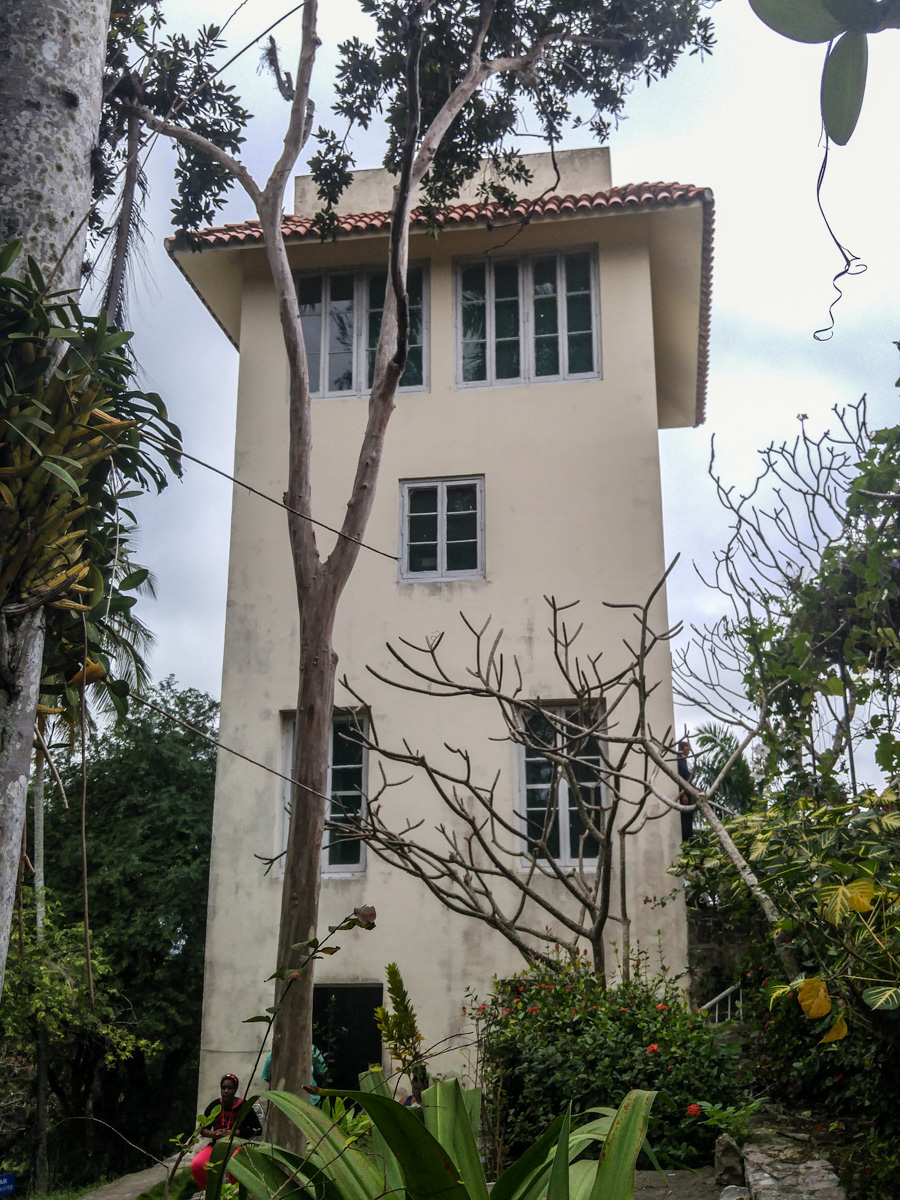
Mary's writing tower
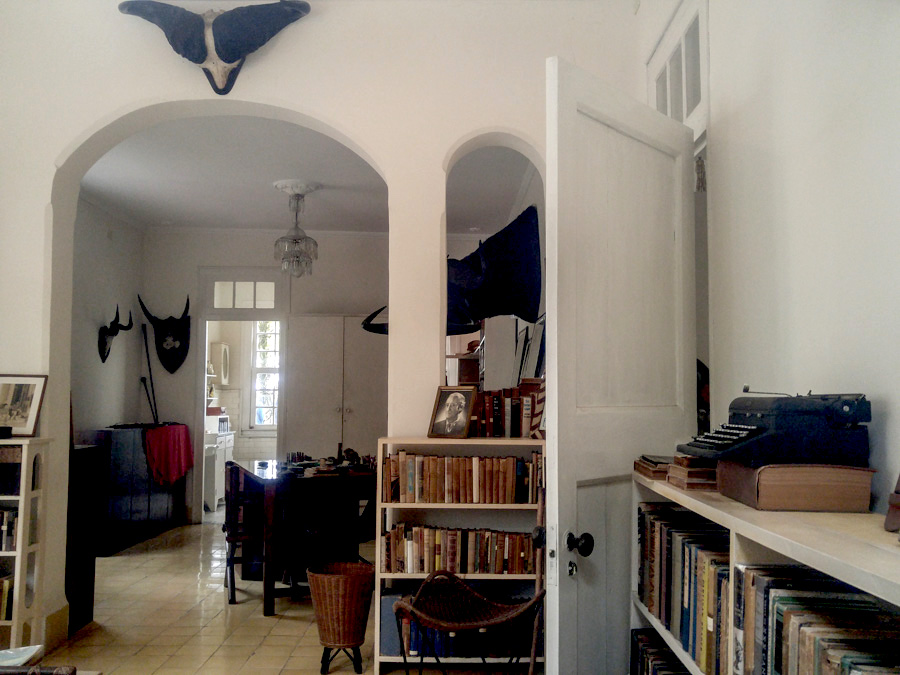
This had to be left behind
Did You Know? - The official Cuban government account is that after Hemingway's death, Mary Hemingway deeded the home, complete with furnishings and library, to the Cuban government, which made it into a museum devoted to the author.
Mary Hemingway, however, stated that after Hemingway's suicide, the Cuban government contacted her in Idaho and announced that it intended to expropriate the house, along with all real property in Cuba.
Mary Hemingway negotiated with the Castro government for certain easily movable personal property (some paintings and a few books), plus manuscripts deposited in a vault in Havana. Most of their personal property, with no way to move it out of the country at the time, had to be abandoned.

Many of his original book collection still is in the residence
Did You Know? - The home, claimed to be in danger of collapse by the US National Trust for Historic Preservation, was restored by the Cuban government and reopened to tourists in 2007. Even so, it has been listed as one of the 11 most-endangered historic sites, despite being outside the US. Also, it is on the World Monuments Fund's biennial list of "100 most endangered sites". Significant disputes and controversies have arisen over the condition of the house and its contents, although researchers who have visited the estate return with consistent claims that the Cuban government, while lacking funding from the US, has responsibly maintained the house, contents, 38 ft (12 m) wooden fishing boat Pilar, and the grounds, since the Revolution
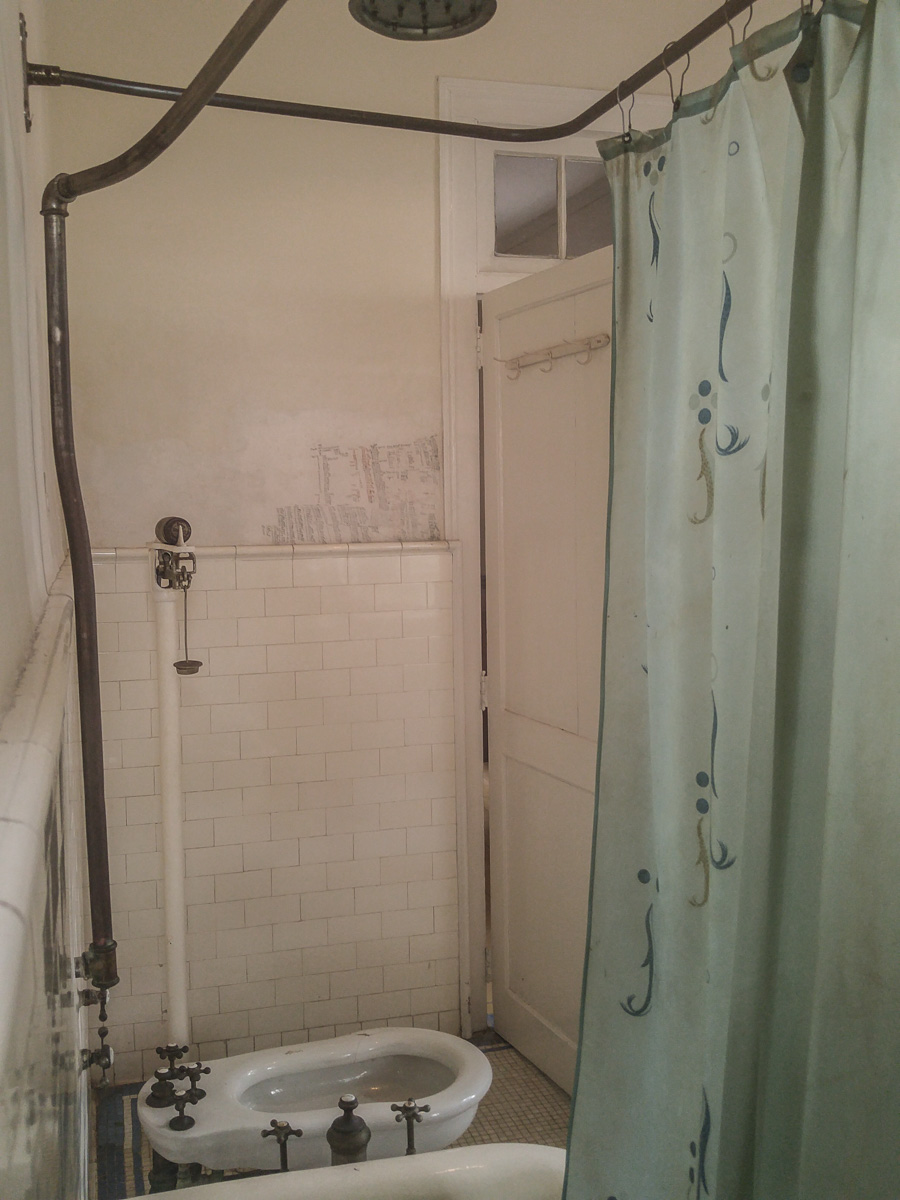
You can explore most everywhere in the house
- The house was one of the first on the island to be fitted with indoor plumbing and the first on the island to have an upstairs bathroom with running water, fed from a rain cistern on the roof.
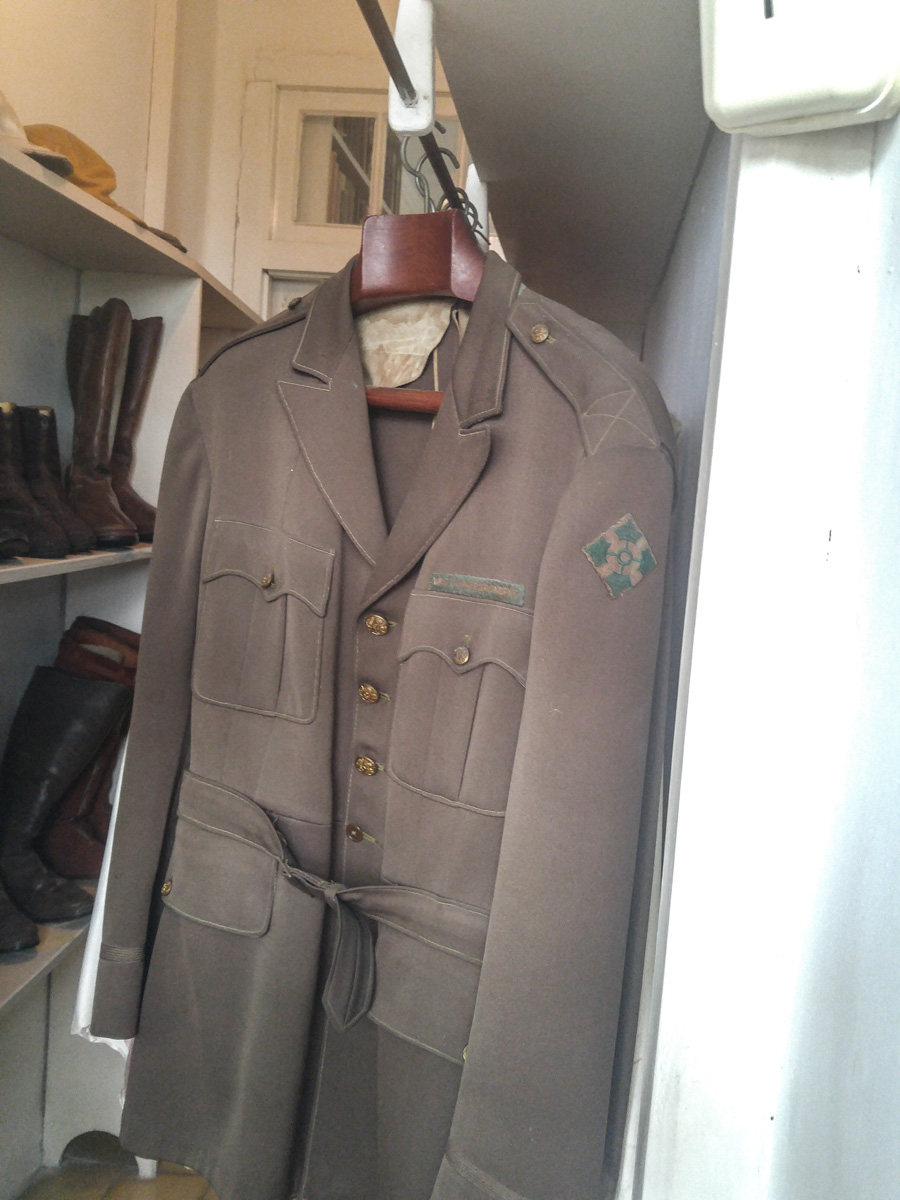
Original uniforms (all insignias removed long ago)
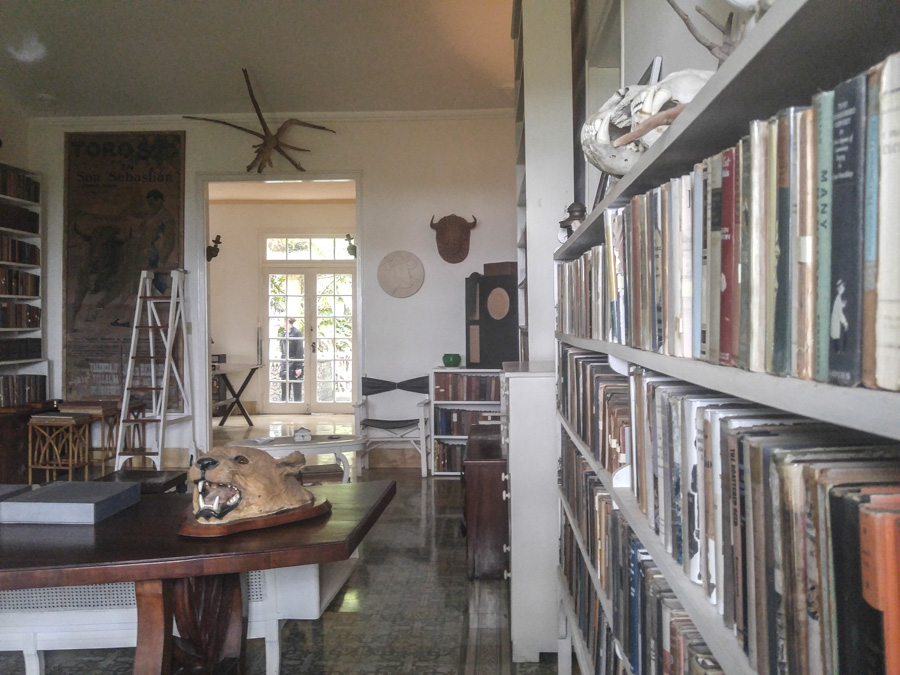
He had an extensive library in the home
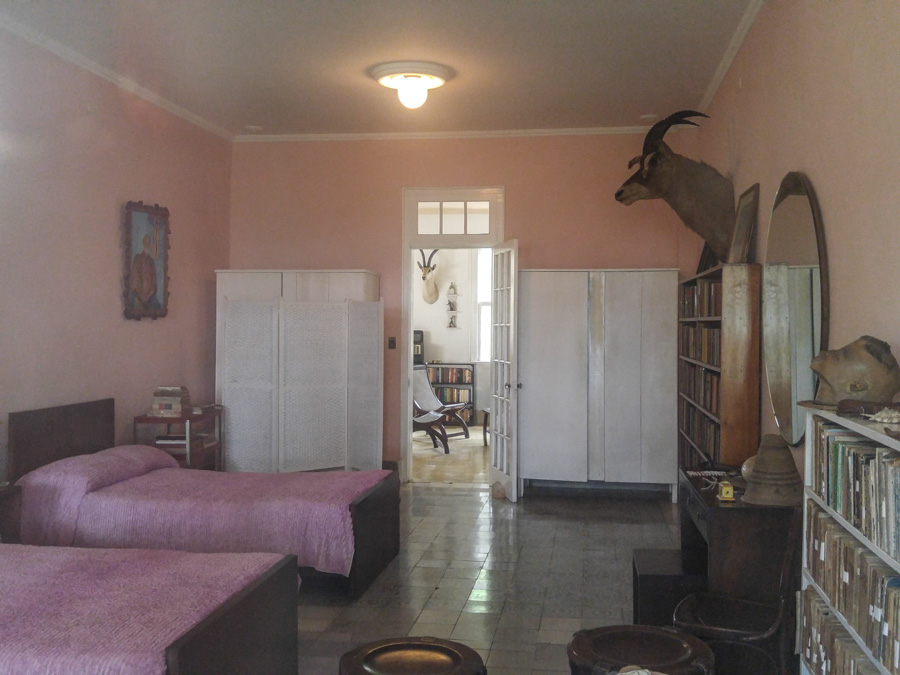
The guest bedroom
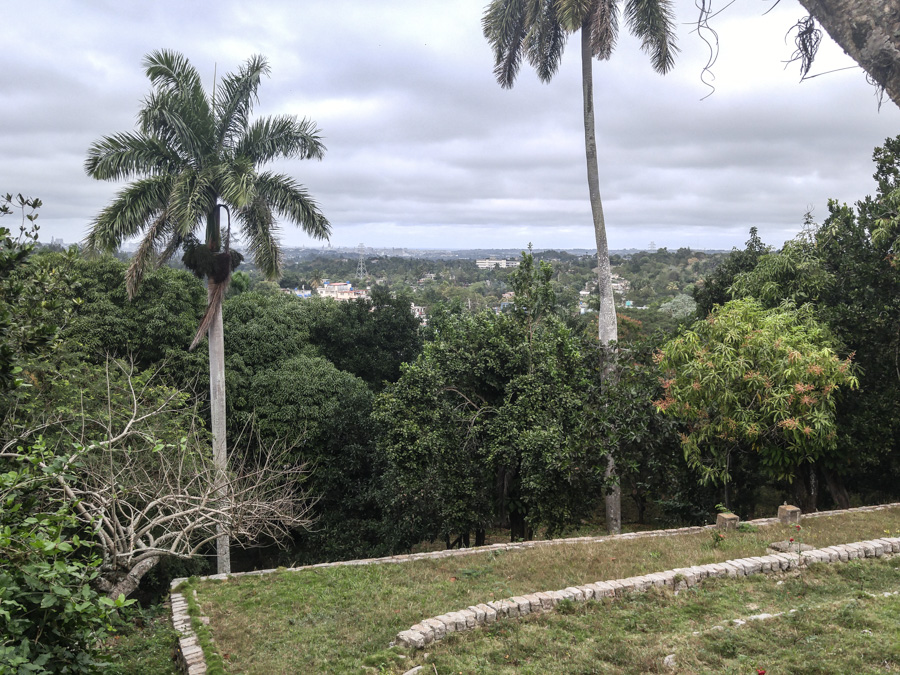
A view from the home into Havana
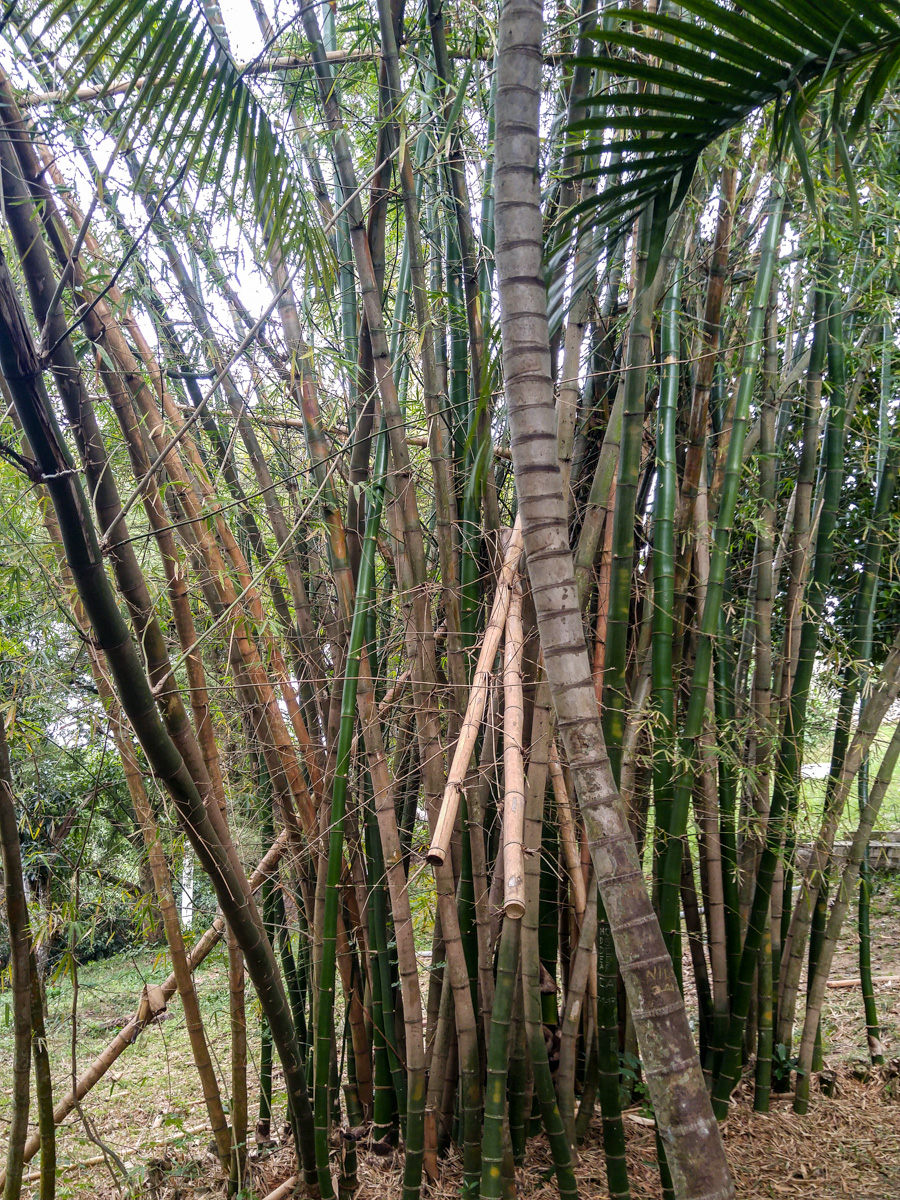
Bamboo populate the grounds today

One of the first swimming pools in Cuba was on the property

...and of course tennis courts
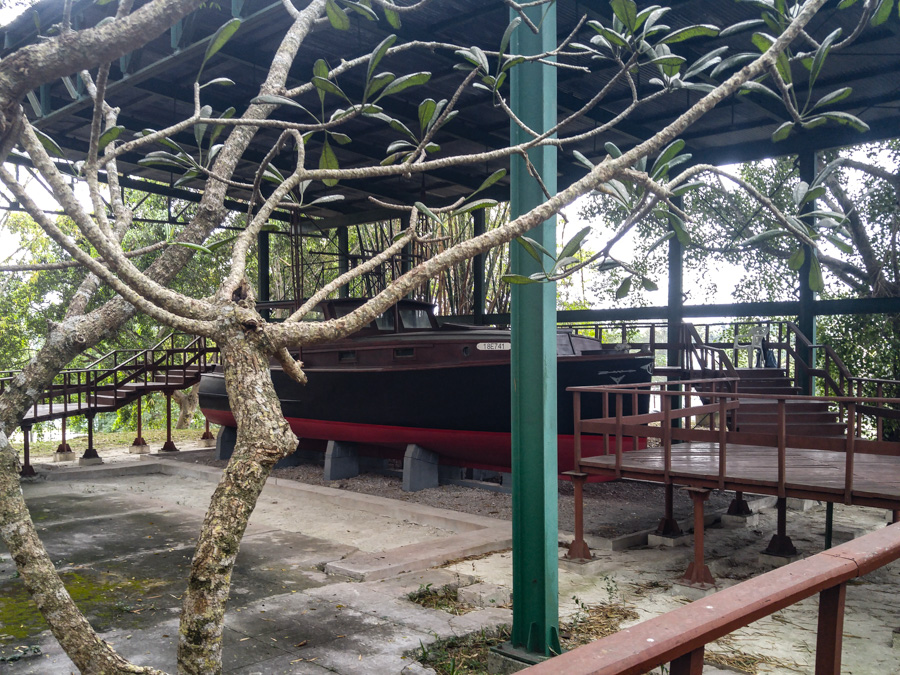
The Pilar is protected from the envoronment
Did You Know? - Ernest Hemingway owned a 38-foot (12 m) fishing boat named Pilar. It was acquired in April 1934 from Wheeler Shipbuilding in Brooklyn, New York, for $7,495.
"Pilar" was a nickname for Hemingway's wife Pauline and also the name of the woman leader of the partisan band in his 1940 novel of the Spanish Civil War, For Whom the Bell Tolls. Hemingway regularly fished off the boat in the waters of Key West, Florida, Marquesas Keys, and the Gulf Stream off the Cuban coast.
He made three trips with the boat to the Bimini islands wherein his fishing, drinking, and fighting exploits drew much attention and remain part of the history of the islands.
In addition to fishing trips on Pilar, Hemingway contributed to scientific research which included collaboration with the Smithsonian Institution.
Several of Hemingway's books were influenced by time spent on the boat, most notably, The Old Man and the Sea and Islands in the Stream. The yacht also inspired the name of Playa Pilar (Pilar Beach) on Cayo Guillermo.
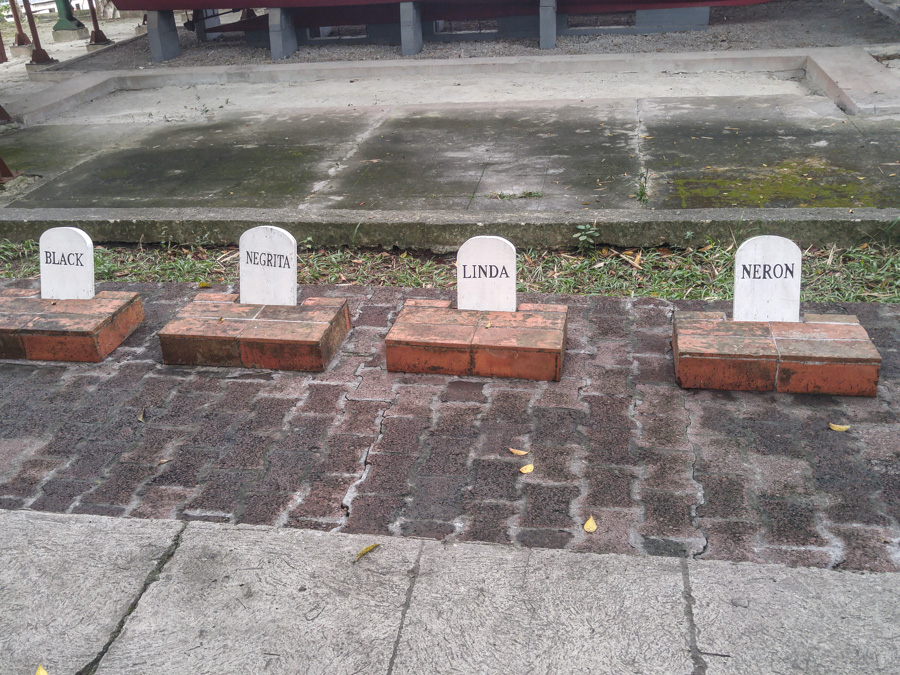
Graves of his beloved cats

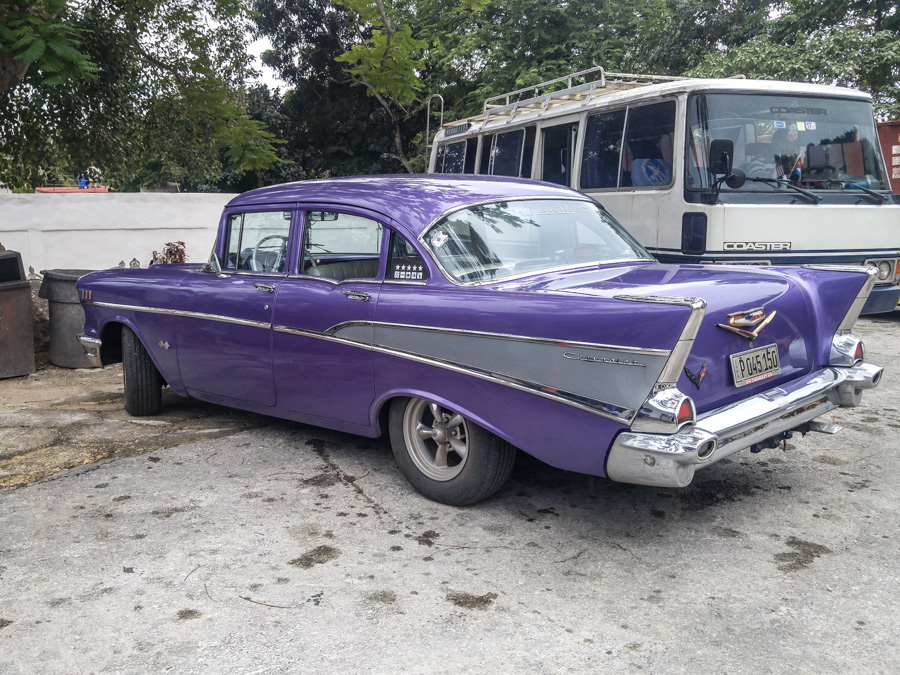
1957 Chevy
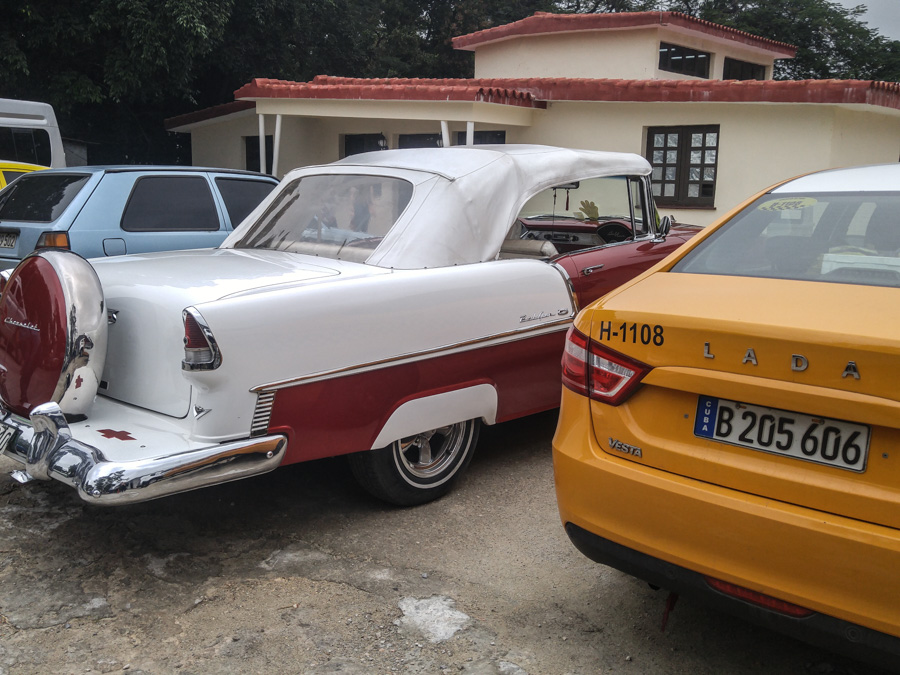
The 1955 Chevy with a "Continental Kit"
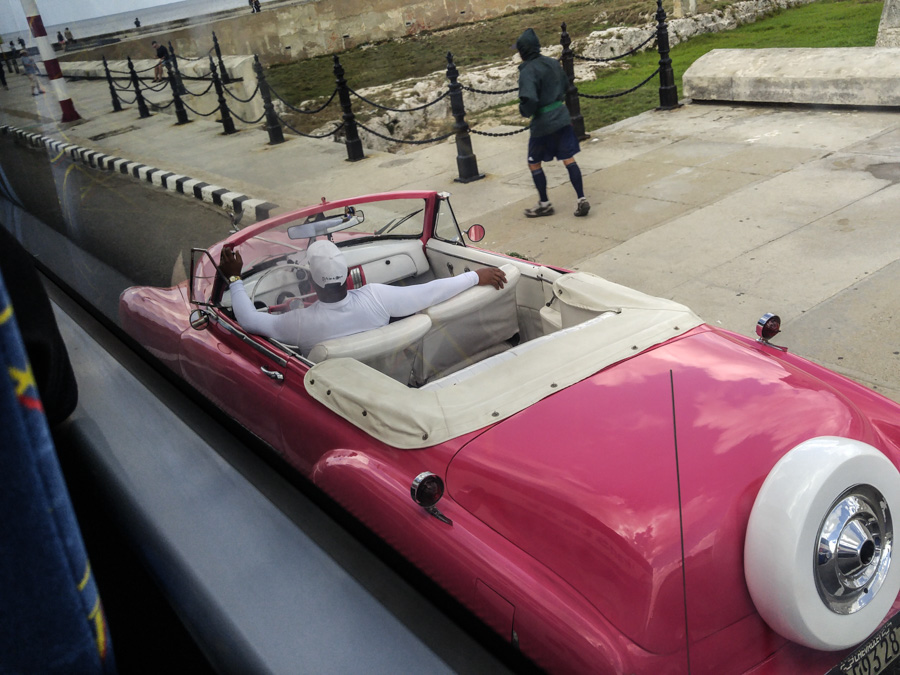
We are talking a pink Packard here

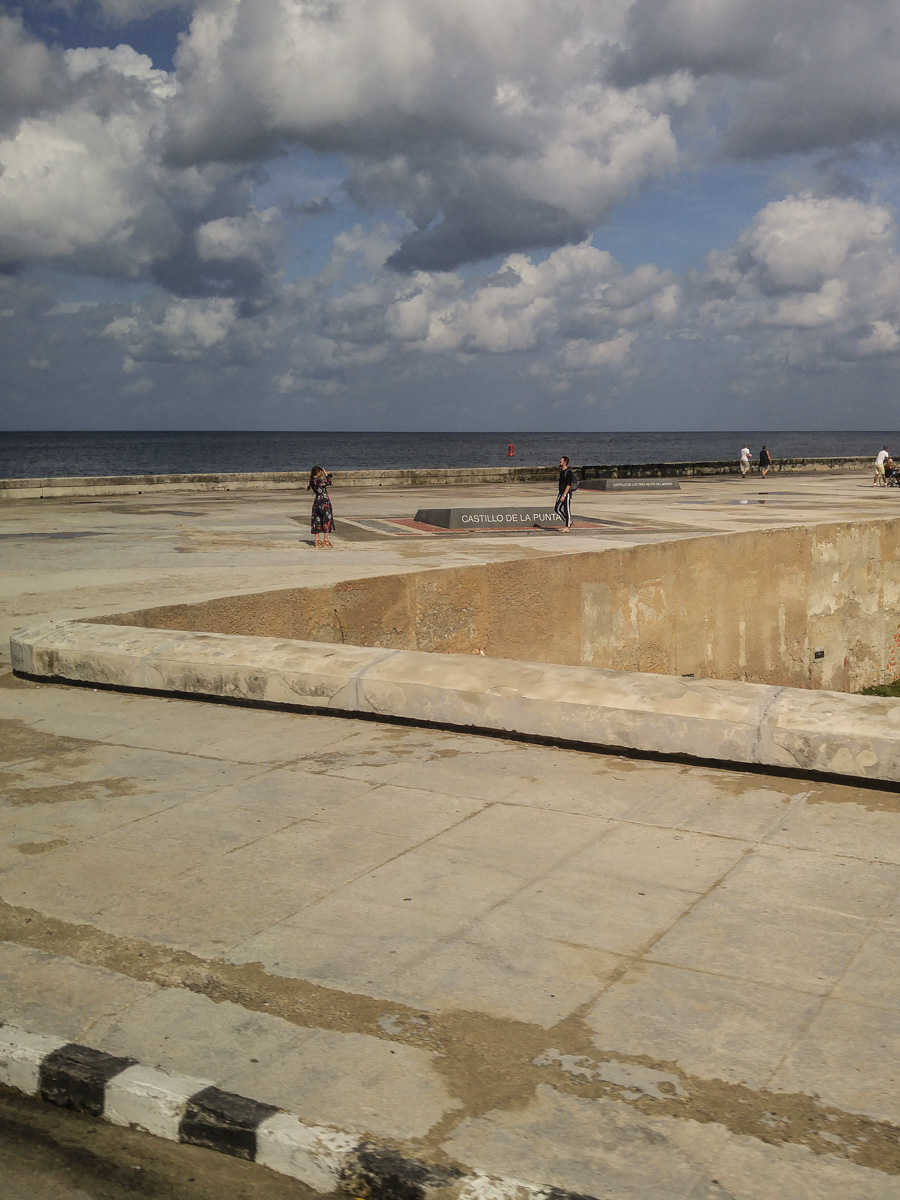
The great wall
Did You Know? - La Punta, just like El Morro was designed to protect the entrance to the Havana Bay that became an important and strategic entranceway to the harbor since the settlement of the town. The nonstop landings of corsairs in the area endangered the harbor and the town. That was why in 1559 it was resolved to post lookouts at La Punta.
In 1582 the king Felipe II, convinced that it was necessary to reinforce fortresses and fleets, ordered the creation of a fortress system in several places of America having its center in Havana.
To fulfill the task Juan de Tejeda was appointed governor of the island, because of his expertise in the matter of fortifications. He brought along the Italian engineer Juan Bautista Antonelli, who has been considered the most renowned professional to practice in 16th century Cuba. The works began by 1590 and went on slowly.
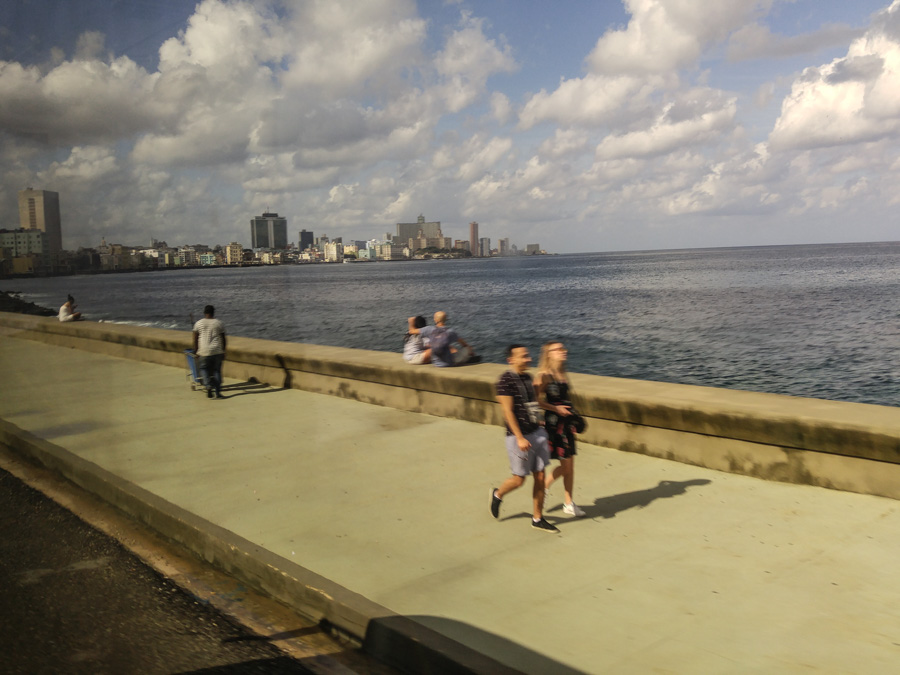
A quick stroll before jumping back on the bus
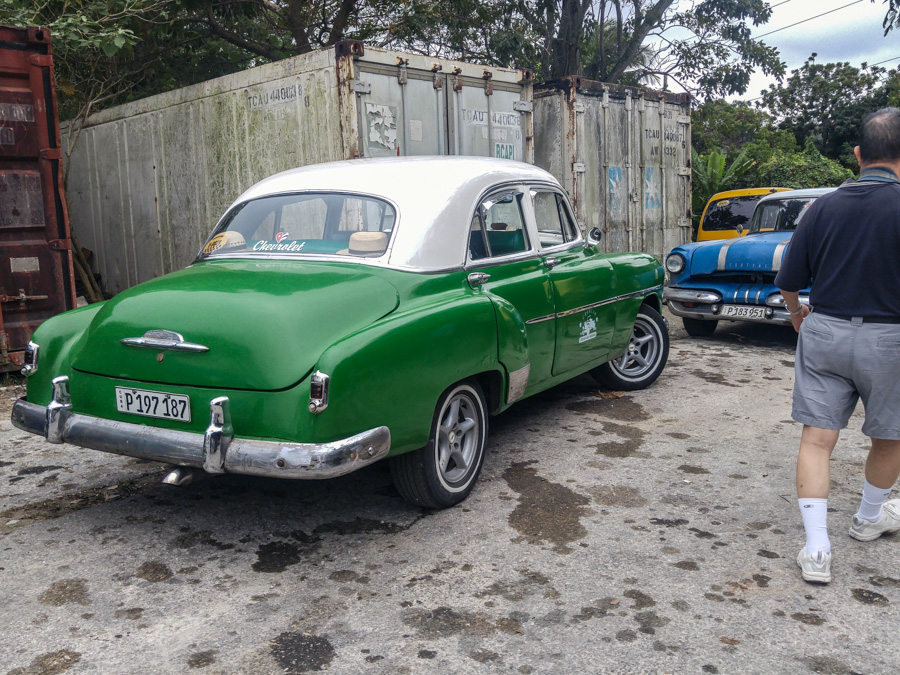
1952 Chevy and 1955 Pontiac
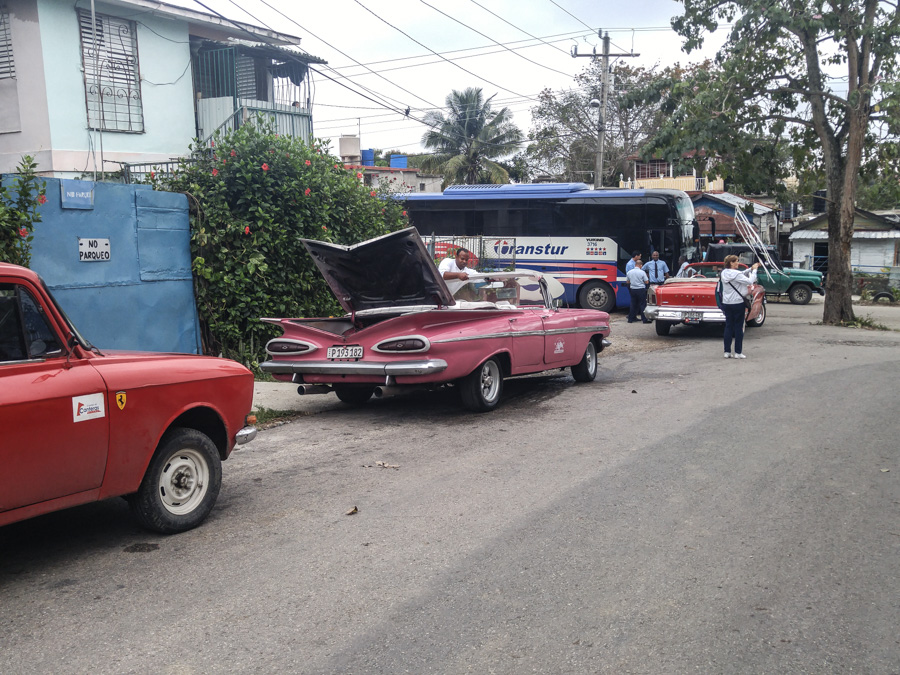
1959 has arrived... a late model
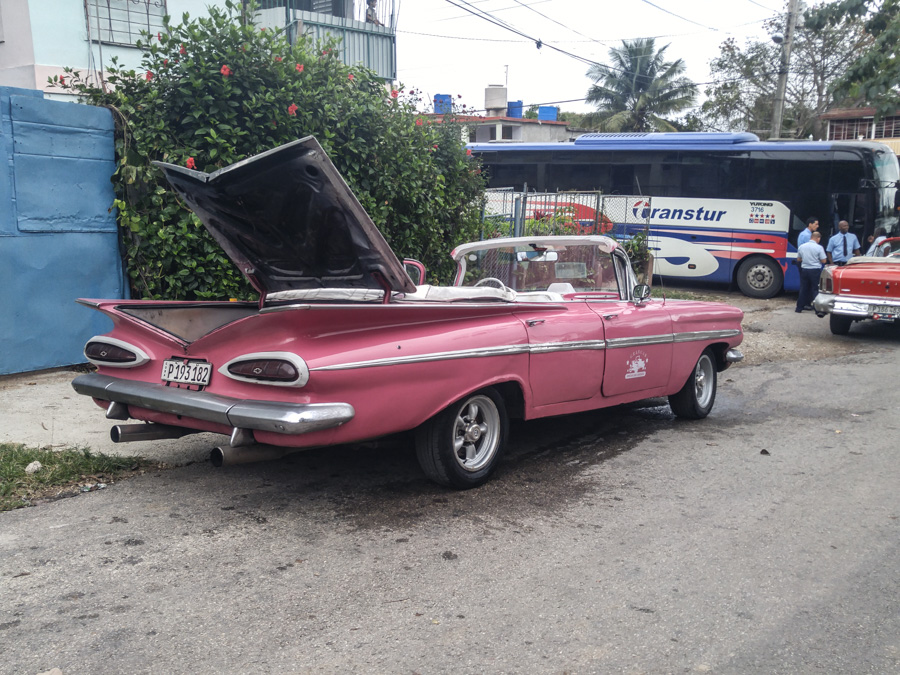
Remember those magnificent trunks?
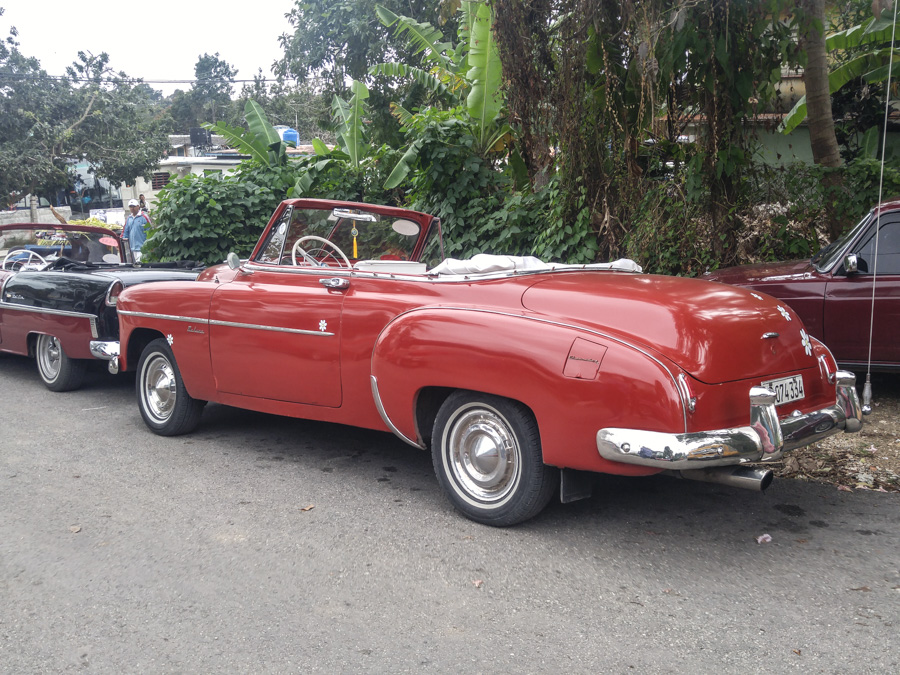
1951 Chevy...probably not the original color?
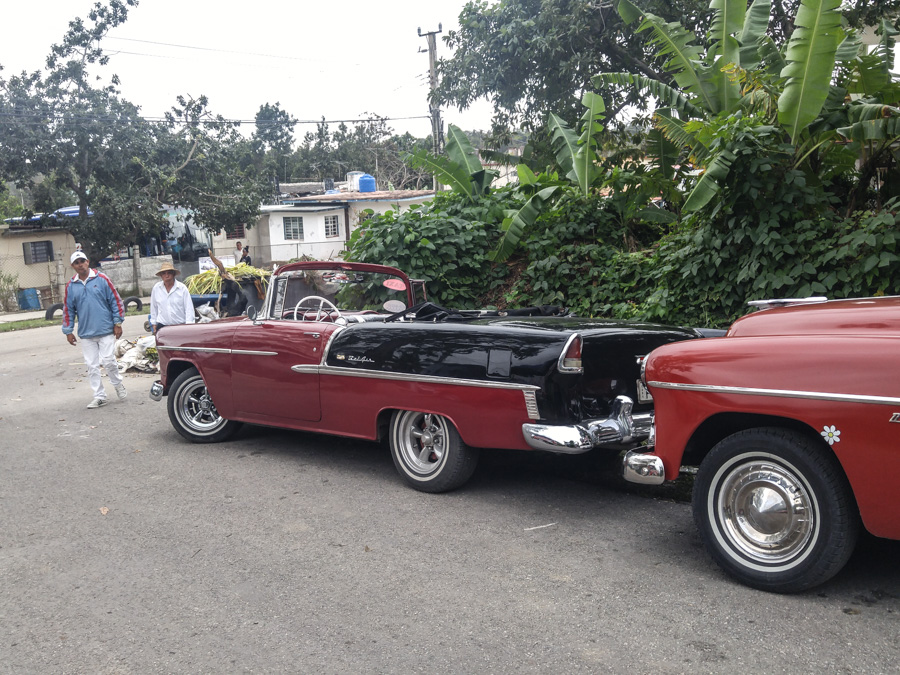
1955 - The year of the two tones
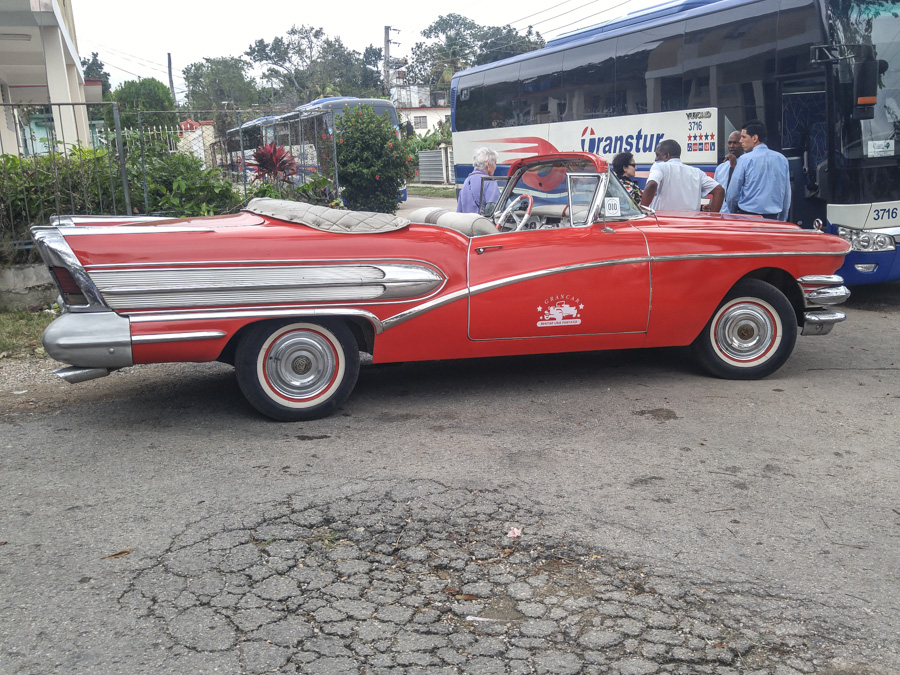
1957 Buick Limited
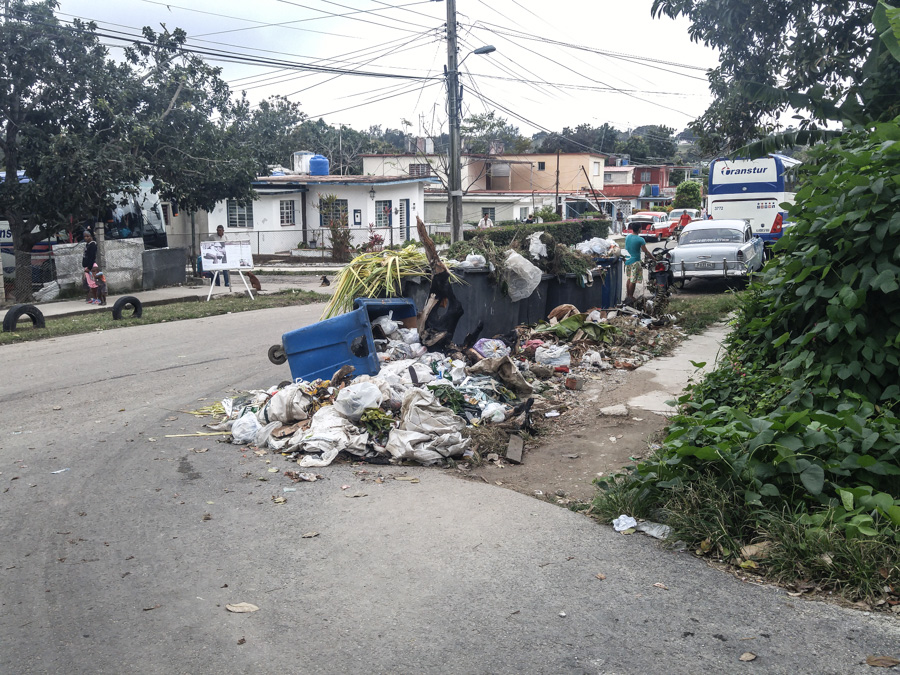
Awaiting trash pickup
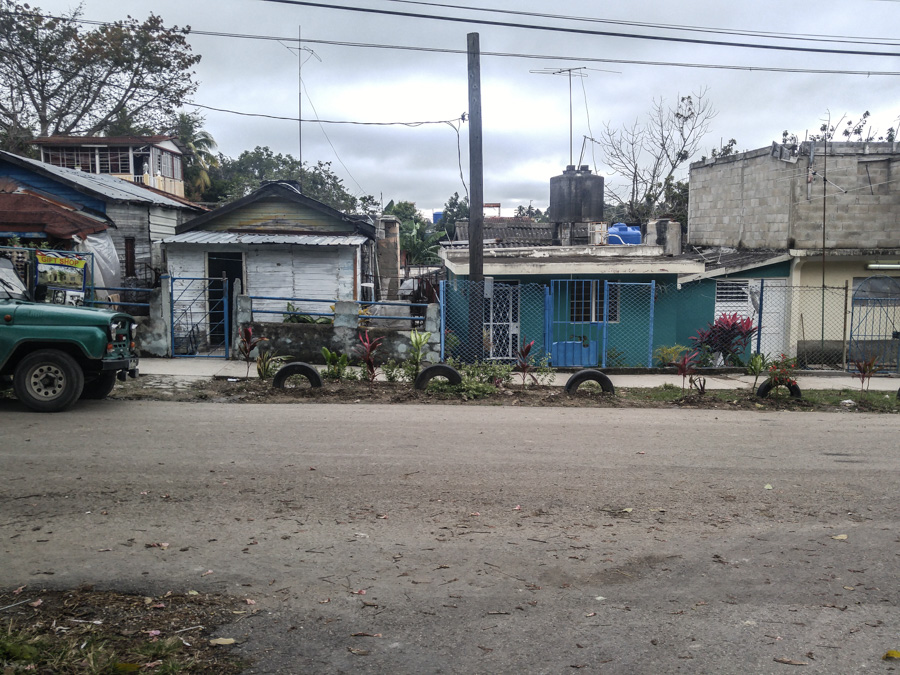
Even the tiny homes have TV antennas

Did You Know? - The Malecón is a broad esplanade, roadway and seawall which stretches for 8 km along the coast in Havana, Cuba, from the mouth of Havana Harbor in Old Havana, along the north side of the Centro Habana neighborhood and the Vedado neighborhood, ending at the mouth of the Almendares River.
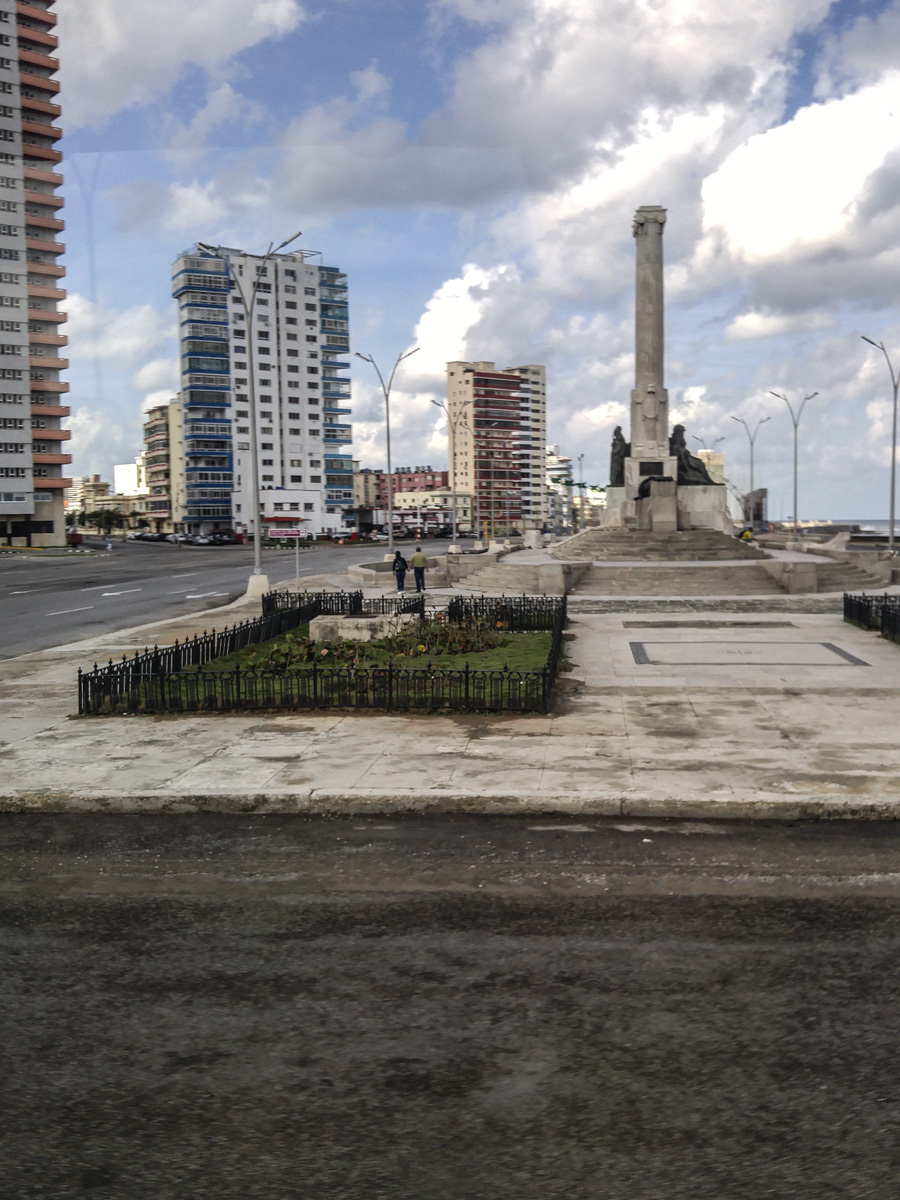
High rises in the city
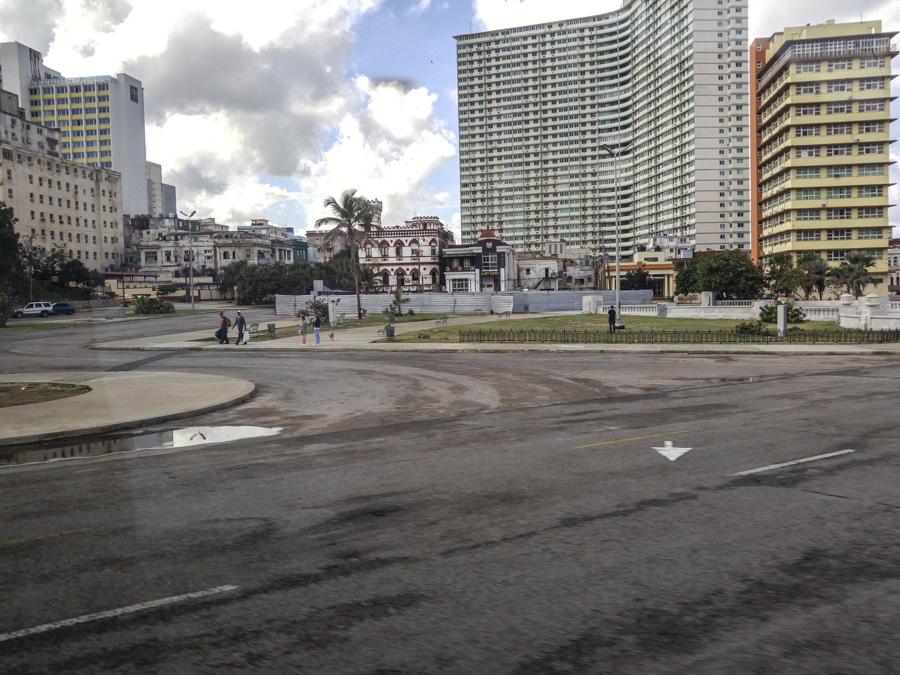
Mostly mass housing
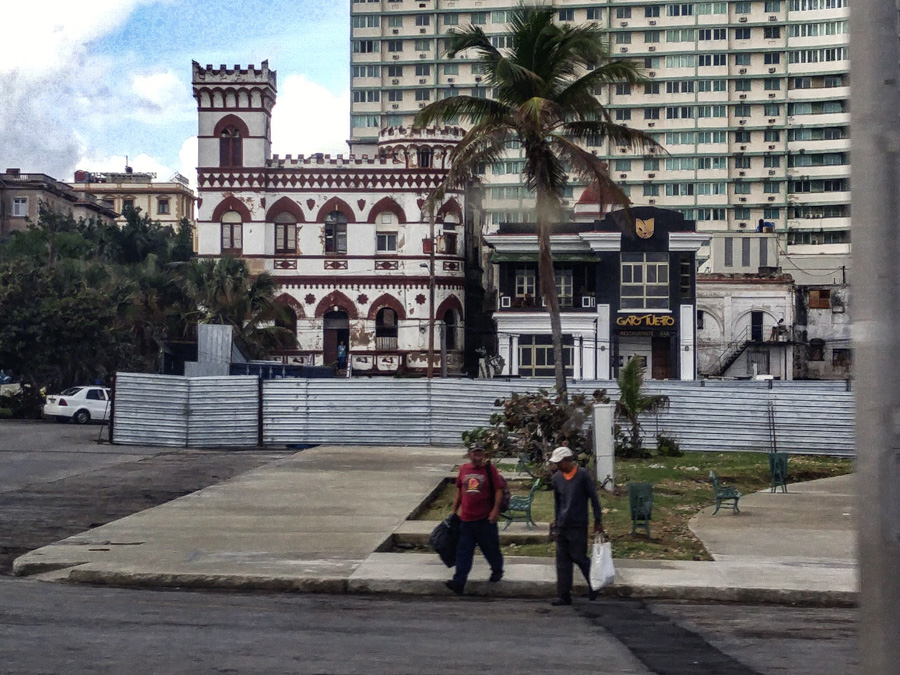
Zoning is not a familiar concept in Cuba

The old and the new stand together
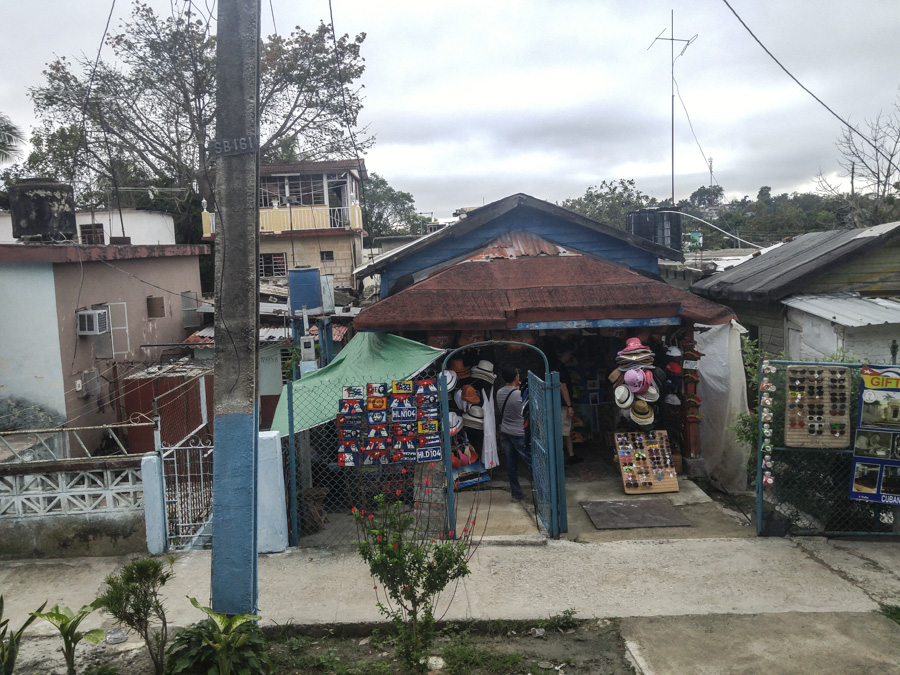
Hot sale underway!

Outside of downtown the housing is typically small
and in need of maintenance

Walking along the bay
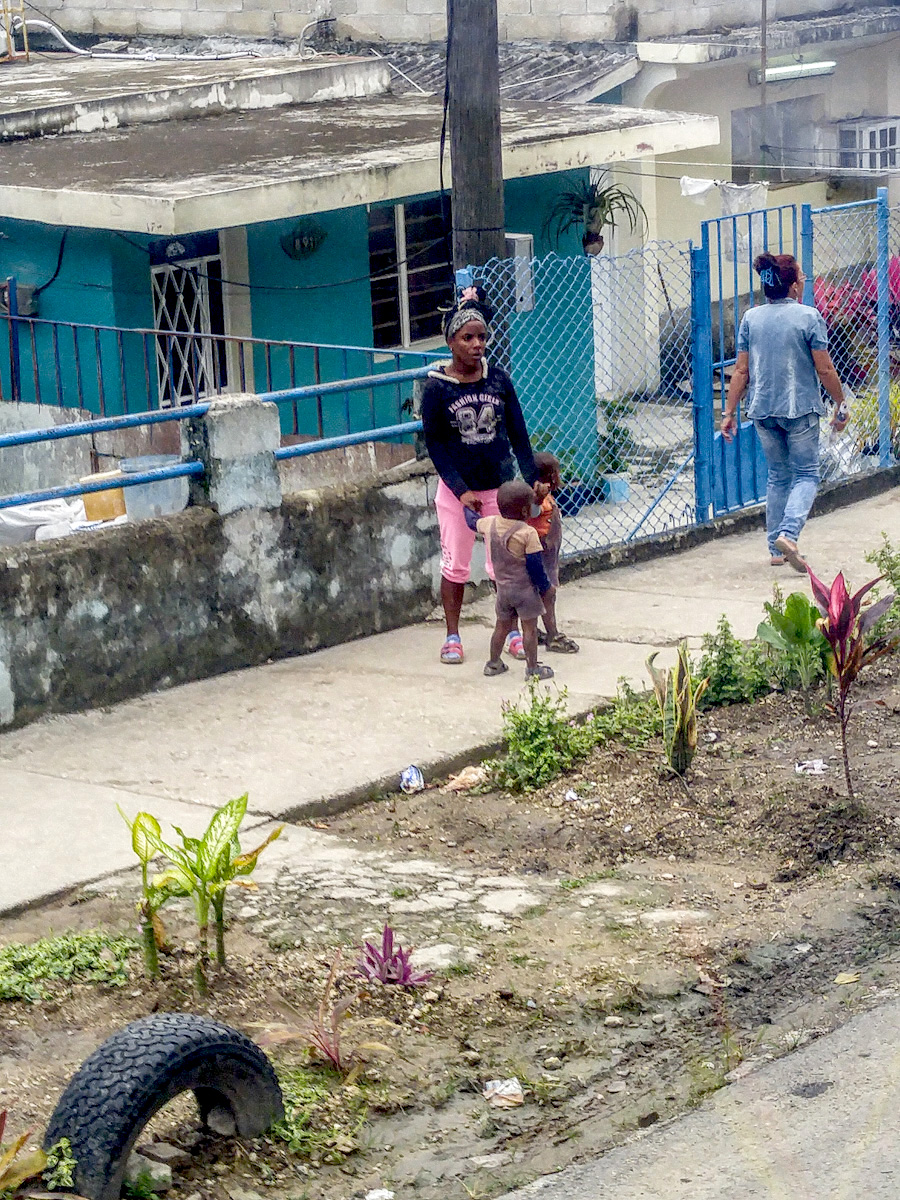
Out for a stroll
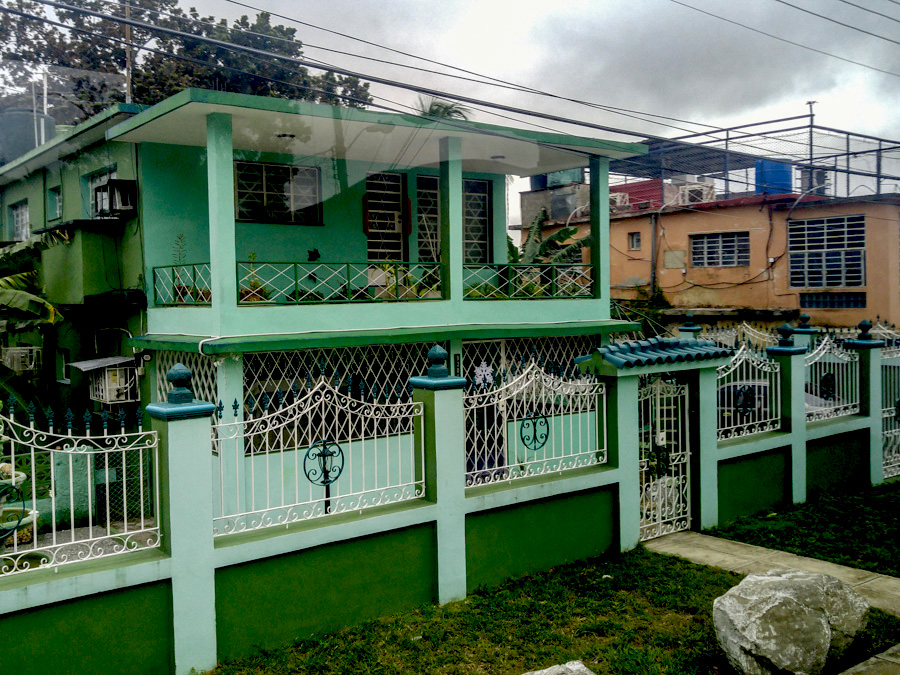
Once in a while there will be a nicely maintained home
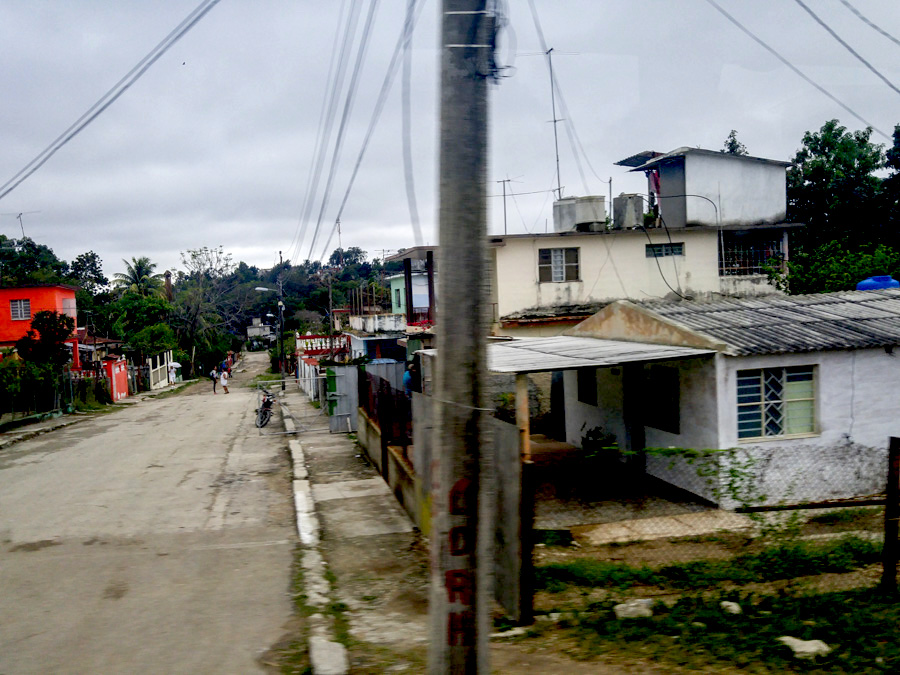
The high TV antennas may be reaching for Miami
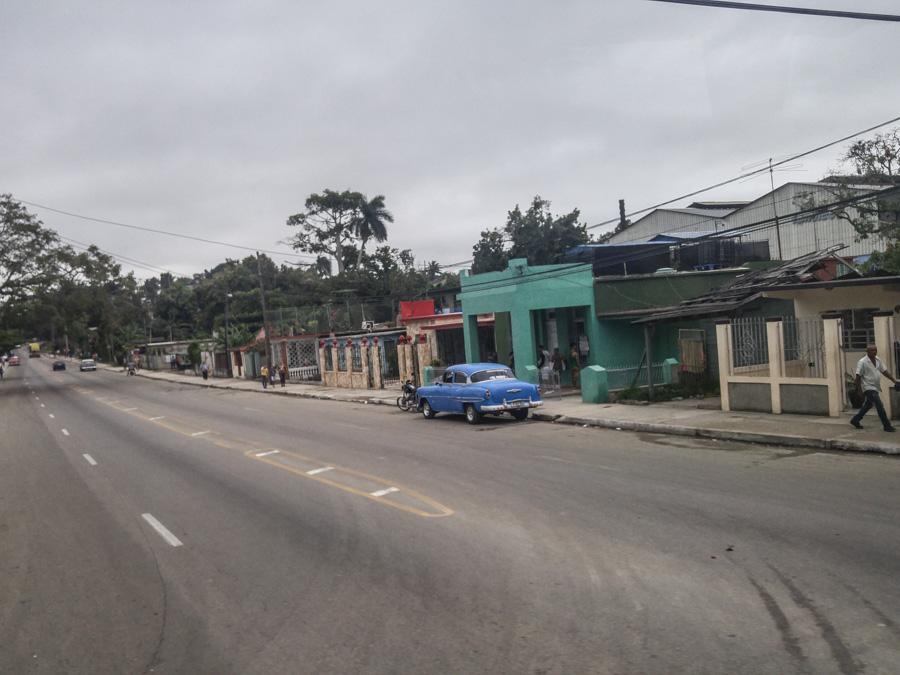
Traffic is not a problem
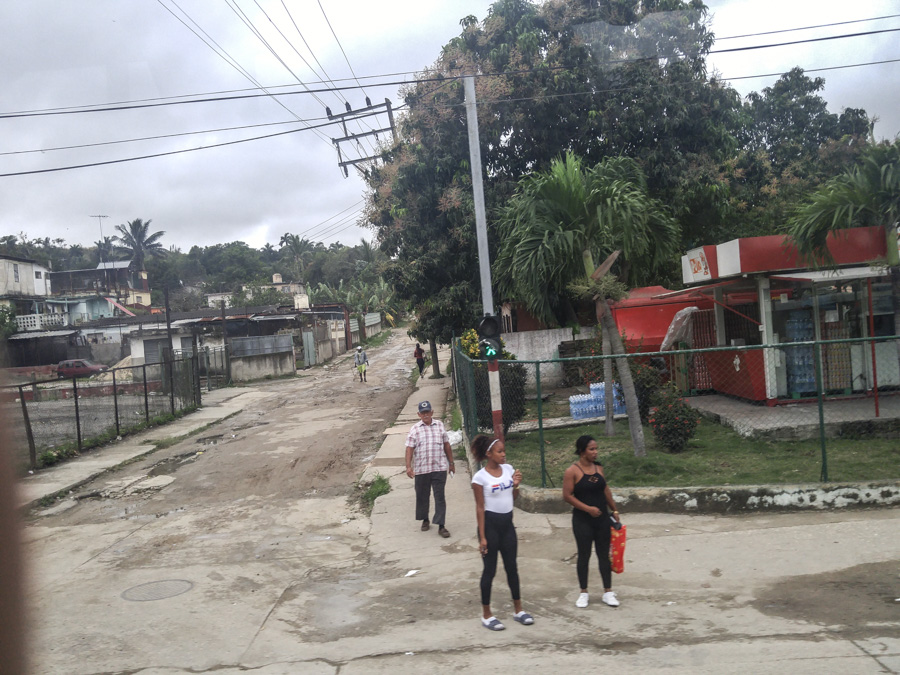
Traffic signs are not prolific in the city

Occasional pay telephone "booths" can be spotted
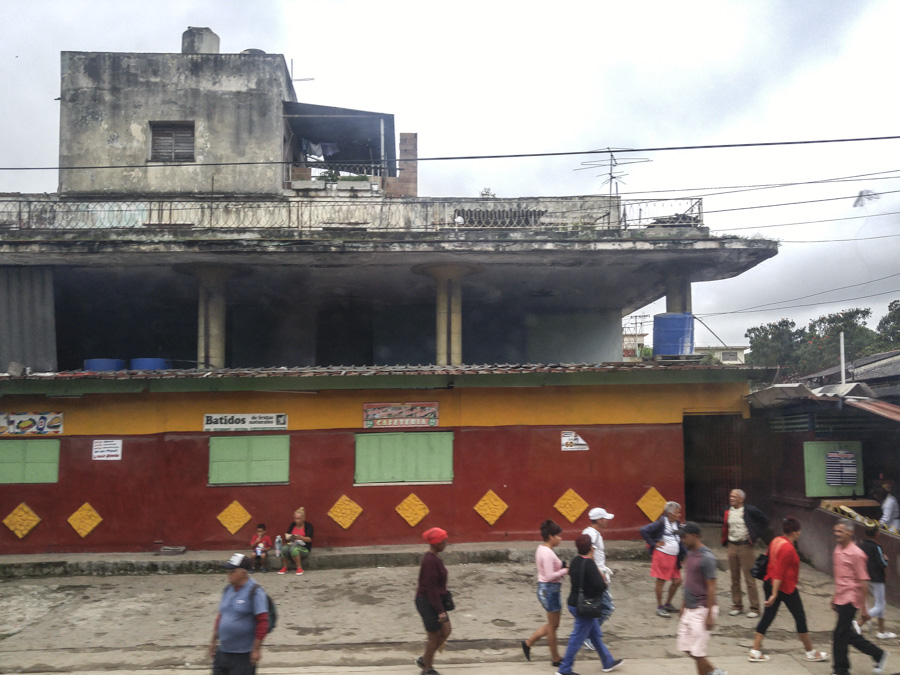
On the way to work
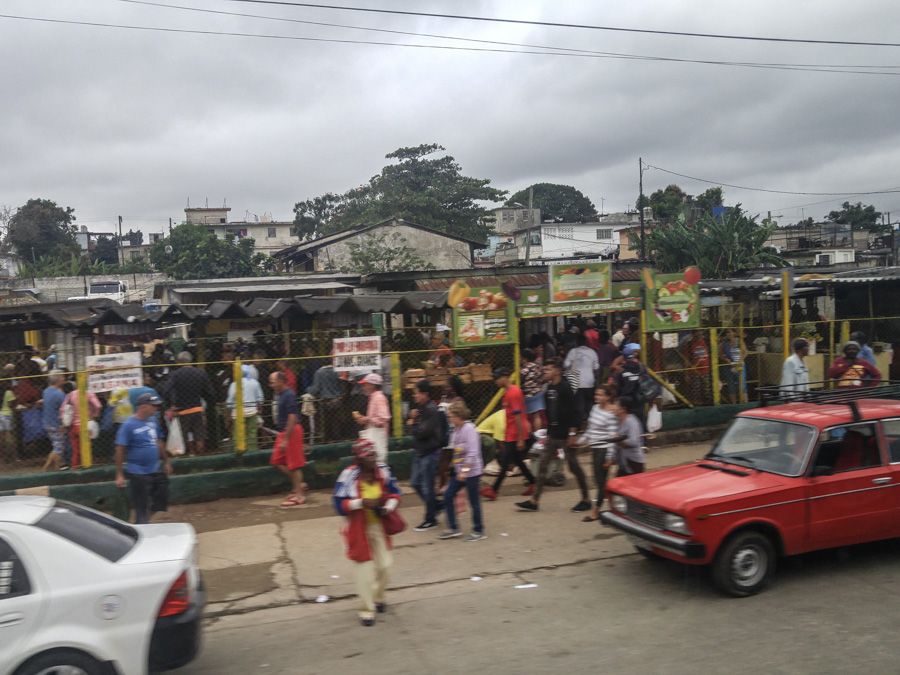
A Cuban swap meet of sorts
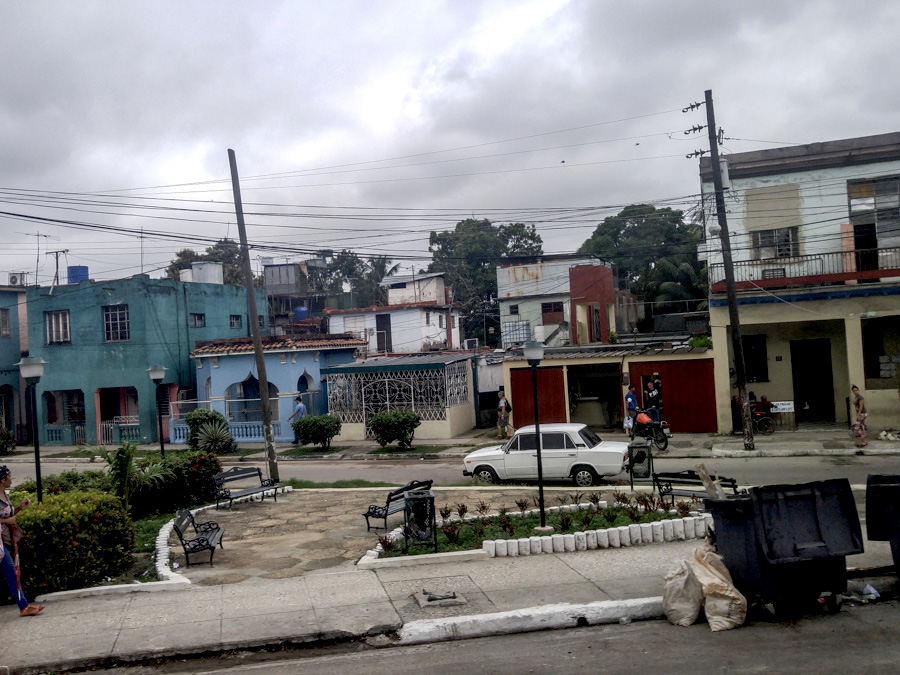
Typical neighborhood
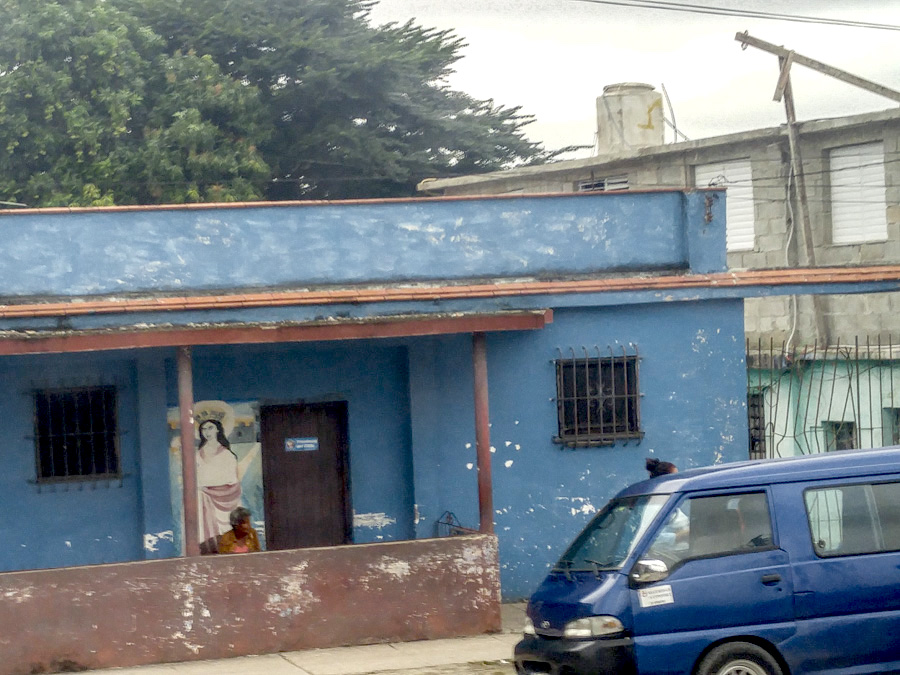
Lots of bars on the windows on the lower floors
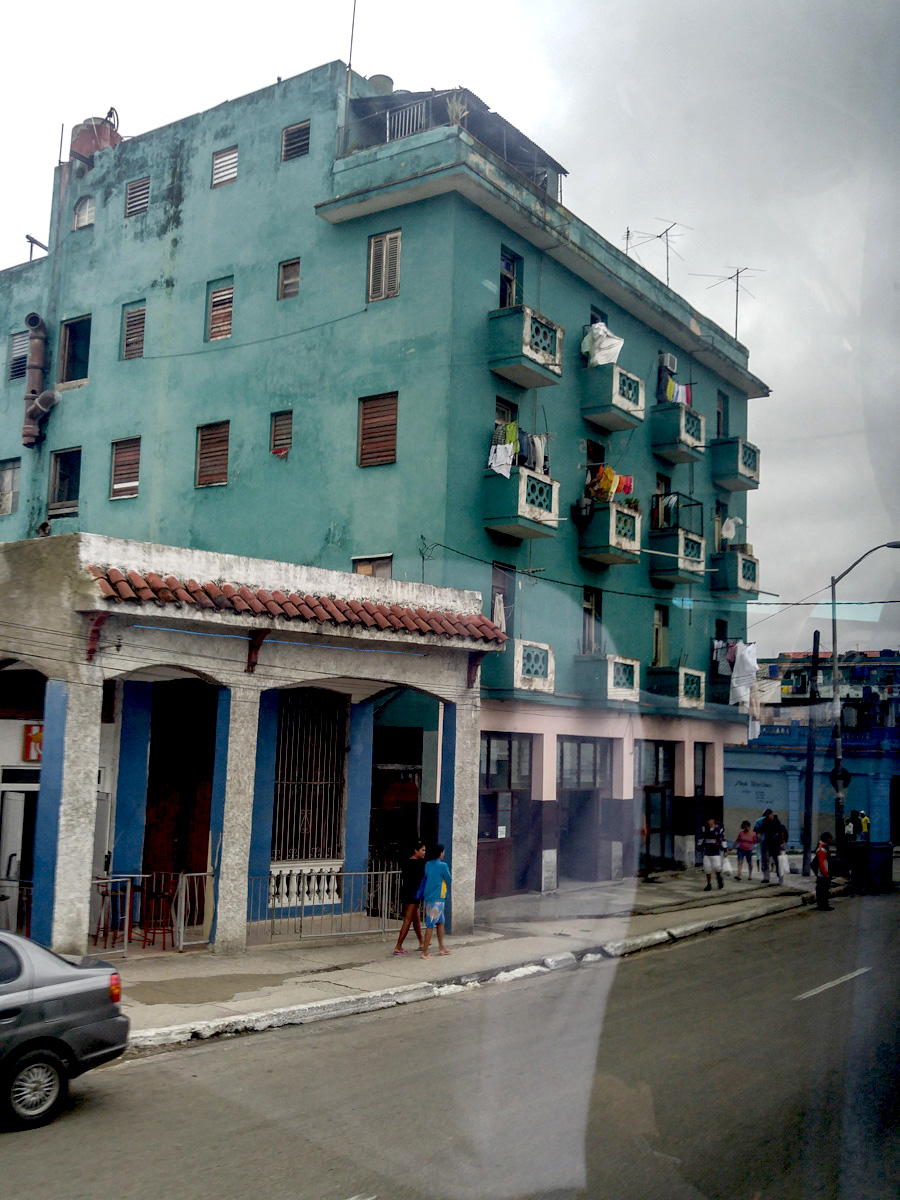
Betcha there are no elevators!
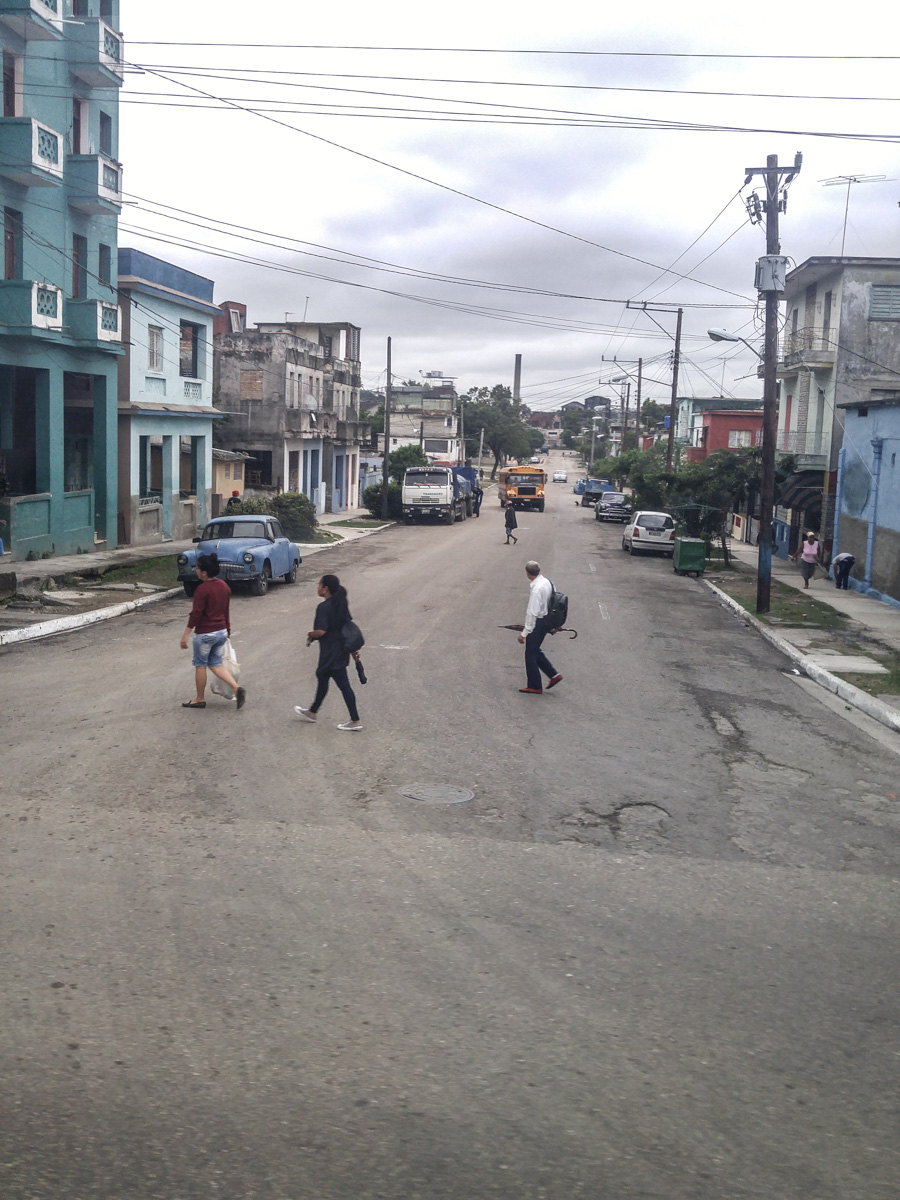
Home from work or school
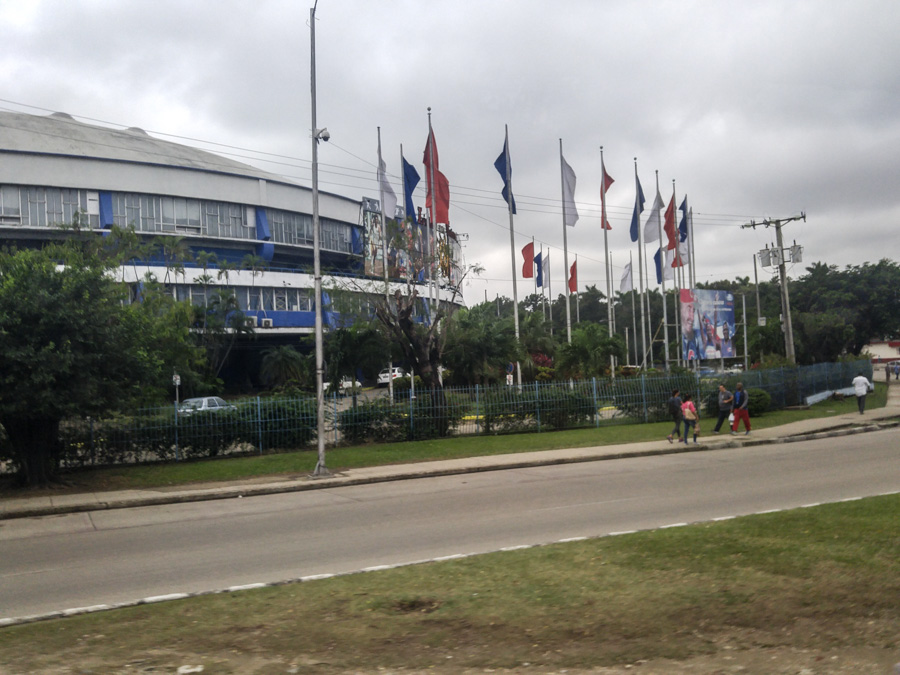
...and then all of a sudden, a modern building appears
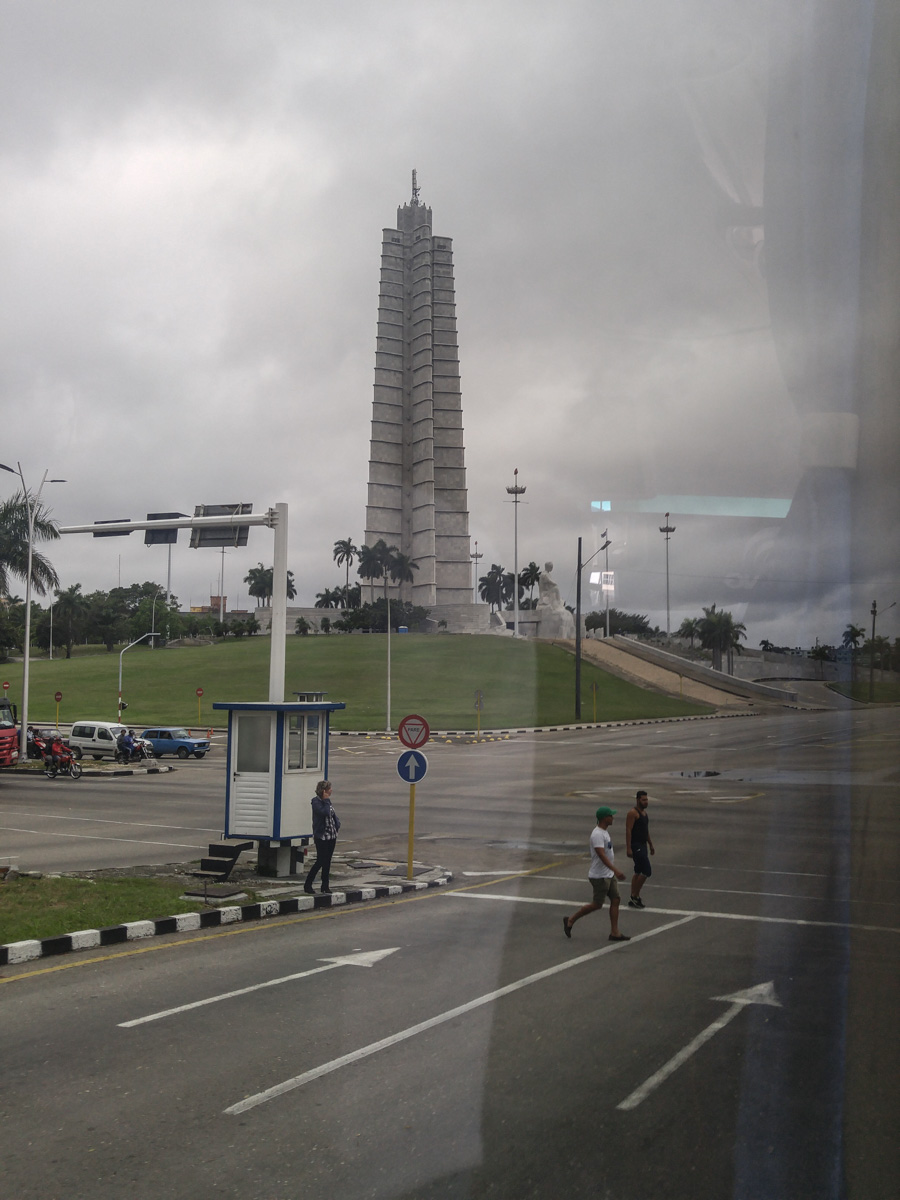
Returning to the ship the monuments began to reappear
Did You Know? - The José Martí Memorial (Spanish: Monumento a José Martí) is a memorial to José Martí, a national hero of Cuba, located on the northern side of the Plaza de la Revolución in the Vedado area of Havana. It consists of a star-shaped tower, a statue of Martí surrounded by six columns, and gardens. It is the largest monument to a writer in the world.
The 109 m (358 ft) tower, designed by a team of architects led by Raoul Otero de Galarraga, is in the form of a five-pointed star, encased in grey Cuban marble from the Isla de Pinos. The design was eventually selected from various entries put forward from a series of competitions beginning in 1939. Entries included a version of the tower topped with a statue of Martí, and a monument similar to the Lincoln Memorial in Washington, D.C. with a statue of Martí seated within. The fourth competition held in 1943 resulted in the selection of a design by the architect Aquiles Maza and the sculptor Juan José Sicre. In order to proceed with construction of the monument, the Monserrat Hermitage, which occupied the proposed site, had to be demolished. Various impediments to the acquisition of the Hermitage by the state led to delays in the demolition and the start of building work, so by 1952 – when Fulgencio Batista seized power in a coup – work on the construction had still not begun.
Eager to garner popular support after seizing power, Batista committed to pushing ahead with the construction of a monument to Martí; but rather than proceeding with the competition winner, he selected the design that had come third in the competition, created by a group of architects headed by Raoul Otero de Galarraga, a 1905 graduate of Harvard University, and included Enrique Luis Varela, Batista's Minister of Works and his personal friend, and Princeton University Professor Jean Labatut. The Monumento a Jose Marti was Raoul Otero de Galarraga's last major architectural and engineering project, and his proudest accomplishment. The base was huge and so deep that when looking from above, the men working below-grade looked like miniature men, and rebar was so heavy that six to eight men were required to carry each piece. The concrete, used to fill the base, took several days to pour.
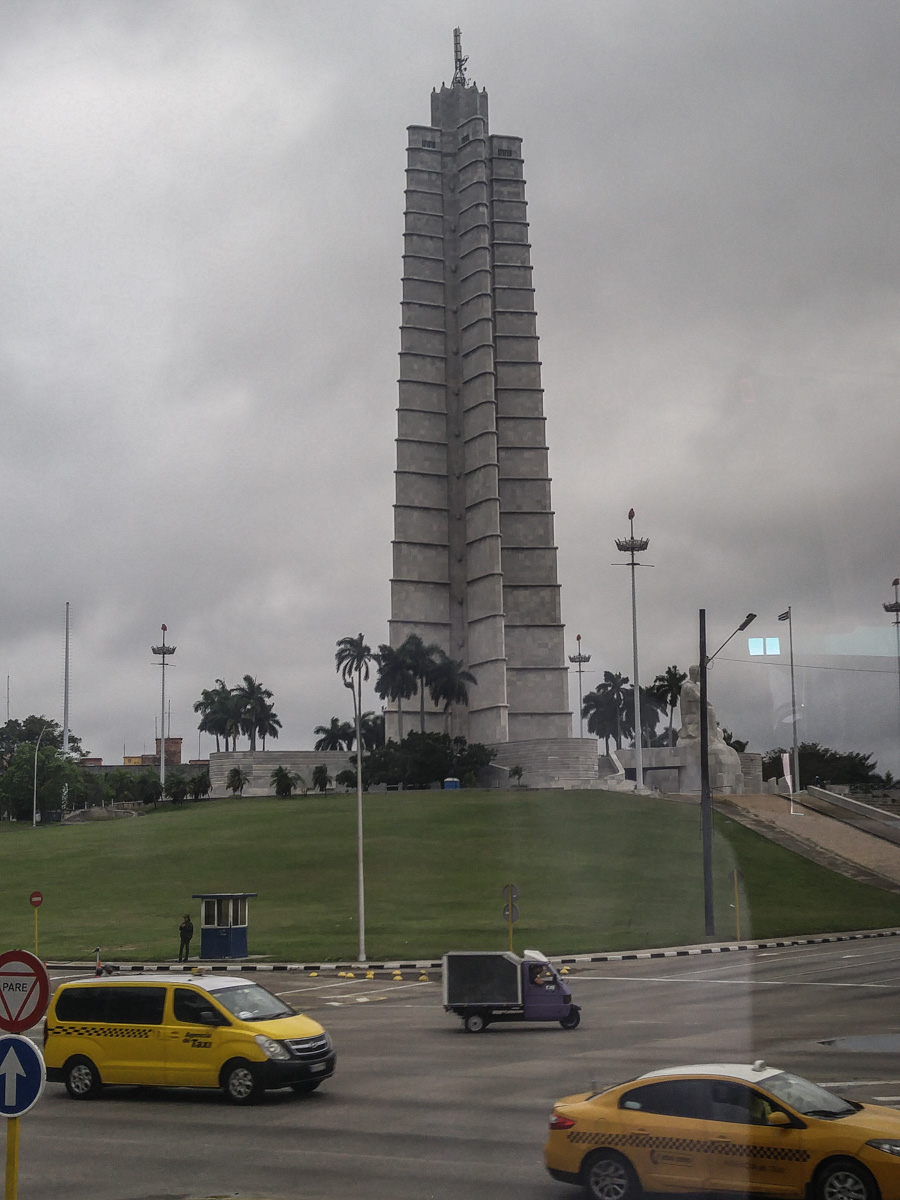
The highest point in Havana
Did You Know? - The selected design includes an enclosed observation deck on the top floor, the highest point in Havana, accessible by elevator which gives commanding views over the city in all directions. (As of August 2016, the observation deck is closed to the public, for replacement of the original elevator.)
Housed on the ground floor of the tower which overlooks the city, the memorial features two rooms of correspondence, writings and items from the life of José Martí and displays relating his life story.
A third room illustrates the history of the Plaza de la Revolucion, and a fourth room is used for displays of contemporary art.
The centre of the tower houses the elevator and features walls decorated with quotes from Martí. Among other items on display is a replica of the sword of Simón Bolívar presented to Fidel Castro by Hugo Chávez during his visit to Cuba in 2002.
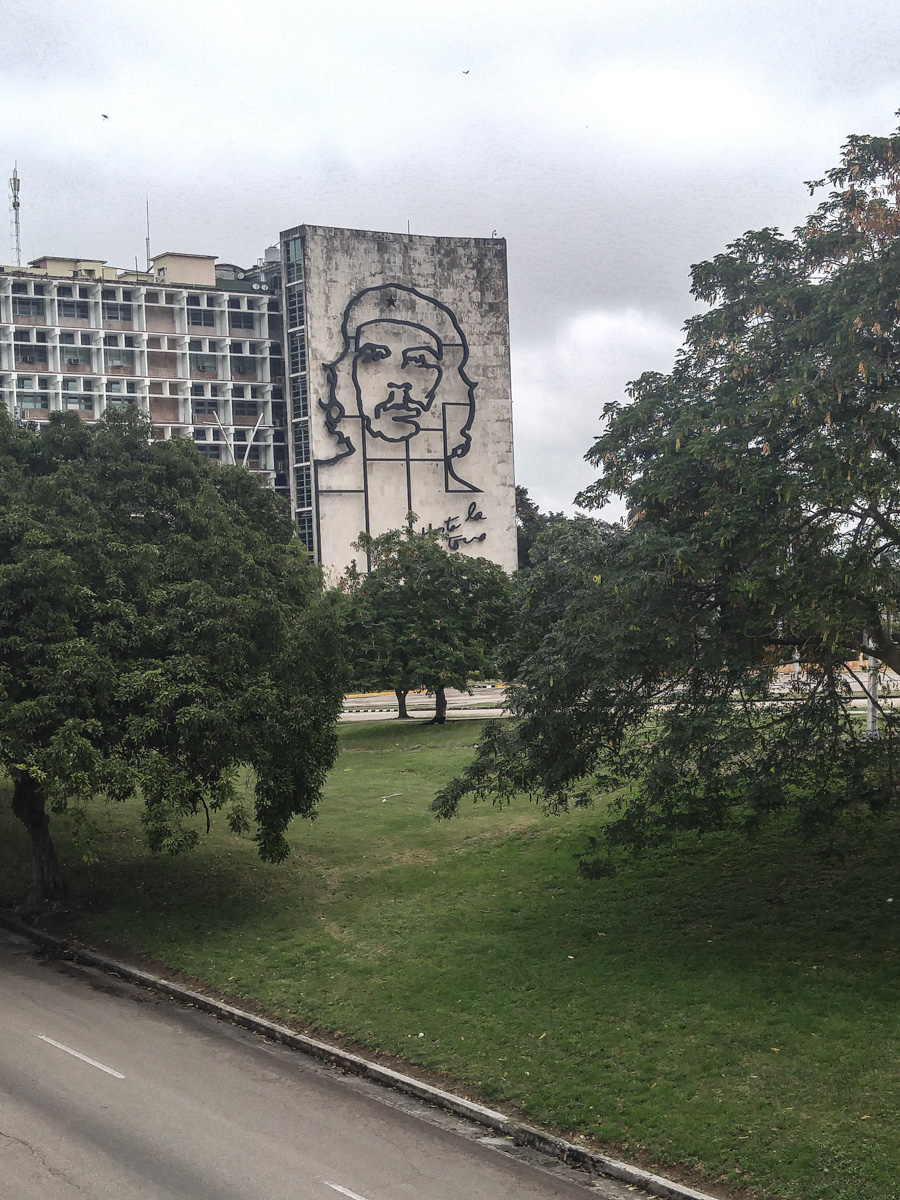
A familiar face

Our cruise ship in the distance
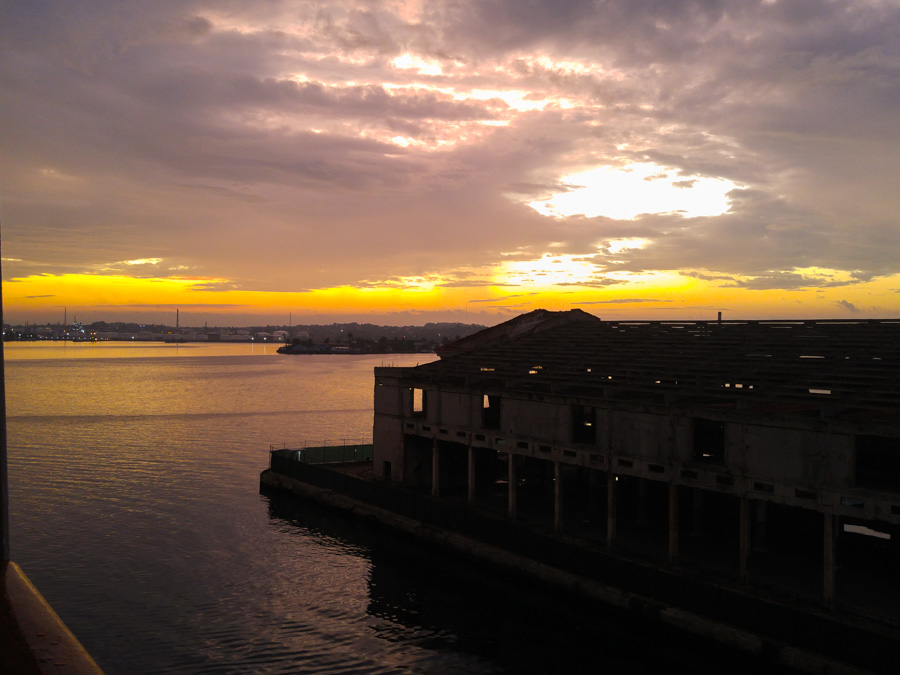
Another night on the ship... Drinks at sunset
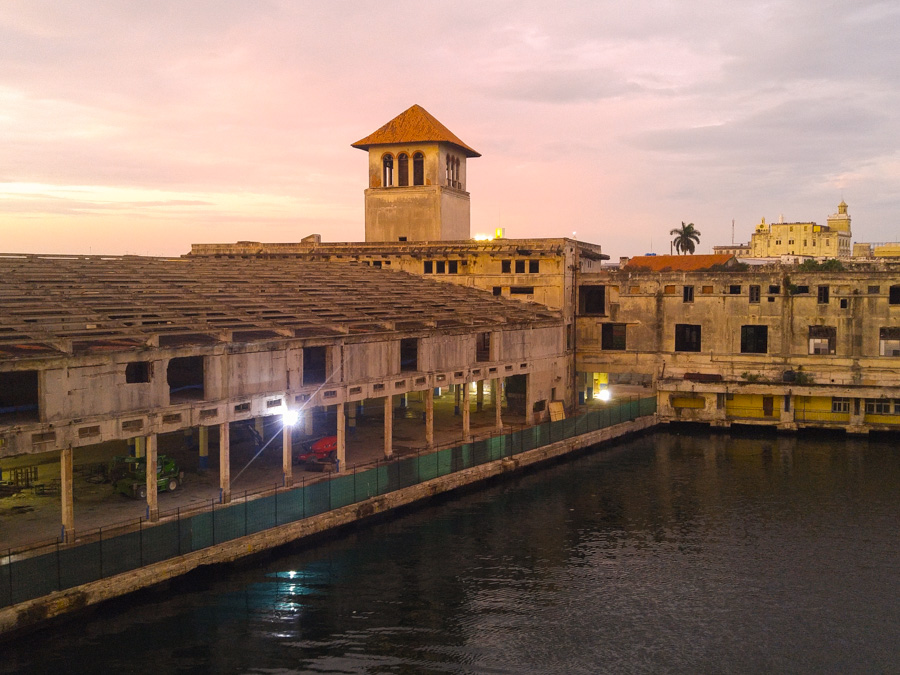
Good night Havana
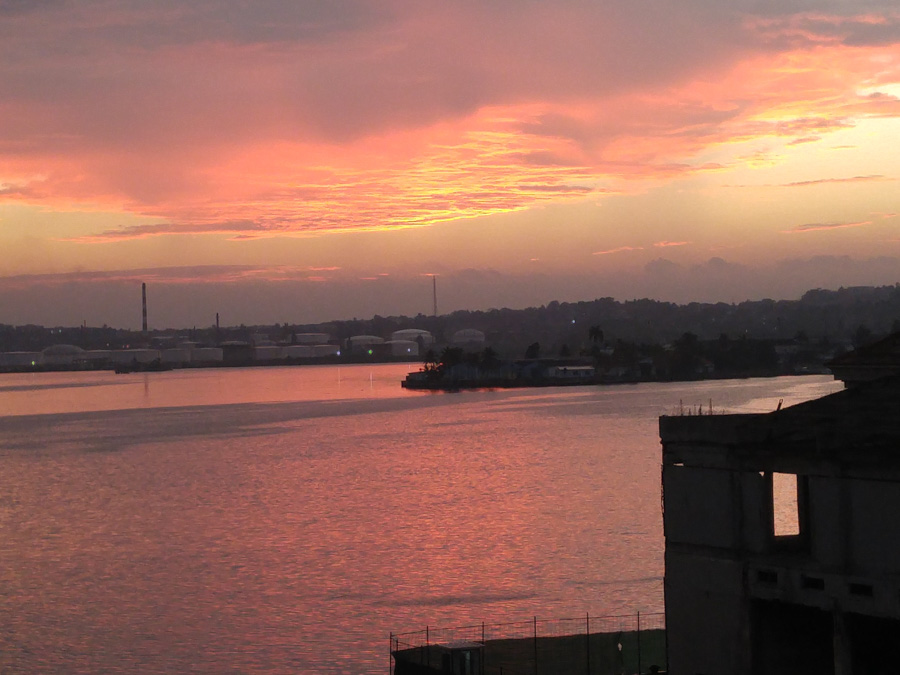
See you in the morning
